
Spring into Action 2023 RoboTeam Twente Interview A Day With... Xerox Carré Jasper de Jong A.D.S.K.V. Slagvaardig Association magazine of W.S.G. Abacus S

INDEX 4 19 20 20 21 4, 27, 28 5 10 11 12, 22, 26 13 23 25 27 Columns Treasurer's Thoughts Staff Says Your Story The Pen About SOR Mathematical Frequentist vs. Empirical Bayes Fun Puzzles Interview: RoboTeam Christmas dinner recipes Chain Interview Reviews Meme page A Day With...Xerox Carré Review: A.D.S.K.V. Slagvaardig Puzzle solution 16
Dear readers,
by the time you will be reading this, a few things will have happened:
• Spring will almost be at the door, which means that, hopefully, the weather will be becoming nicer and warmer over the next couple of weeks;
• I will have had the chance to print and cut one of the copies of this edition of the Ideaal! at Xerox (maybe even the exact copy you are holding in your hands right now);
• The spring break will have passed, meaning that I will have been back to Italy to, among other things, bawl my eyes out for hours on end as I watch this one very specific great Italian series, produced by Rai (the national public broadcasting company of Italy), called 'Mare Fuori' (in other countries translated to and known as 'The Sea Beyond') together with my mother, who will have been waiting specifically for me to watch season 3.
'Mare Fuori', which tells the story of the staff and inmates at the IPM ('Istituto Penale per i Minorenni', so a Juvenile Penal Institution) of Naples as war among different mafia families within Naples breaks out.
Most of the series actually just takes place within the walls of the IPM, as the past of its young inmates and how they came to be held in the IPM is told and as the staff tries to save them from the mistakes of their parents, who in most cases are affiliated with some mafia family and have let their kids be involved.
This series is soul crushing! It certainly does not help that I am unapologetically a huge crybaby who is moved to tears by almost anything I watch, read or listen, but it is honestly hurtful to watch and care for these characters as they only end up destroying their lives even more and often end up dead.
Still, this remains a beautiful series that very well portrays the situation regarding the mafia and how it effects so many lives, even ones still young and full of hope for the future.
Why am I talking about this? Well, I recently discovered that this series is available on Netflix in some countries and, since a 4th season is on its way, I really think you should watch it! And don't forget to lift up your spirits afterwards by reading this amazing edition of the Ideaal!.
Kind regards, Lavinia
AGENDA
• 18 April 21:00
Bouldering
• 19 April 16:00
PhDrink
• 19 April 20:00
Wheel of Fortune Drink
• 21 April 16:00
(A)bac(ch)us FriAD
• 26 April 16:00
CB Announcement
• 3 May 12:45
Alumnus Lecture
• 3 May 20:00
Cantus
Colophon
Editorial address:
W.S.G. Abacus
Postbus 217, 7500 AE Enschede
Phone: 053 - 489 3435
ideaal@abacus.utwente.nl
www.abacus.utwente.nl
Editors:
Jorg Gortemaker
Tim Hut
Daan van Kats
Eva van Laar
Lavinia Lanting
Xanti Lizanzu
Timon Veurink
Guest writers:
Wessel Heerink (Treasurer's Thoughts), Daan Velthuis (The Pen), Christmas dinner committee (Christmas dinner recipes), Wei-Ting Sun (Frequentist vs. Empirical Bayes), Maria Christina van der Weele (Staff Says), Richard Boucherie (About SOR), Jasper de Jong (Review: A.D.S.K.V. Slagvaardig), Thomas Kanger (Peculiar Potter's Puzzle).
Ideaal! is the magazine issue of Wiskundig Studiegenootschap Abacus and the department of Applied Mathematics.
The responsibility for the articles published in this magazine lies with the original author(s).
The period of notice of Abacus is four weeks before the end of the association year (August 1st). That means that you must cancel your membership before July 4th. If you have forgotten to cancel your membership before that time, you will pay contribution for another college year.
Would you like to cancel your membership? Send an email to board@abacus.utwente.nl.
3
Editorial
Treasurer's Thoughts
Text: Wessel Heerink


During my free time, I like to find geocaches. Geocaching is like a treasure hunt, but you (usually) get the exact coordinates where the treasure is located. The first geocache was hidden in the United States on May 3rd, 2000, the day after “Blue Switch day”, the day on which GPS was made available for civil purposes. Anyone can hide a geocache and anyone can search them too, anywhere around the globe. For instance, there are currently 168 geocaches hidden in Enschede alone!
Personally, I am currently on a hunt to find a geocache in as many different municipalities in the Neth-
erlands. This is because there is a website (project-gc.com) which makes maps which show in which country, province and municipality you have found a geocache. The darker the colour, the more geocaches you have found in that region.
I usually plan an entire day of geocaching, on which I then usually find between five and ten geocaches in different municipalities. I usually travel by public transit, which makes for quite a puzzle when you want to transfer onto a bus that runs only once an hour, but during that transfer of 5-10 minutes you also want to find a geocache to cross another municipality of the list. It adds quite a bit of pressure when you can’t find the geocache at first glance.
Puzzle: Persistency is key
Text: Timon Veurink

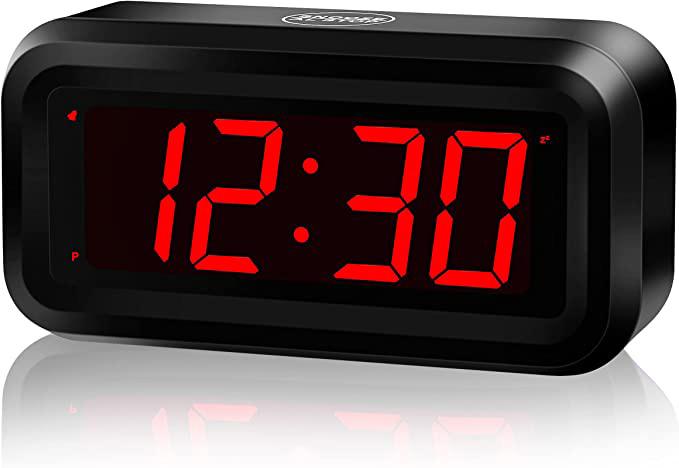

0.9999999342992266
If you also want to find some geocaches, you can make a free account at geocaching.com. On the same website you can also search for geocaches near you. Note that there are many different types, and not all can be found within five minutes. Happy Geocaching!


4
Interview: RoboTeam
The RoboTeam is one of the student teams of the University of Twente. We went to their homebase in the Future Factory and interviewed them on what being in the team is like.

Can you introduce yourselves, and tell us when and why did you join the RoboTeam?
To: I'm Tom and I've been with the RoboTeam since September. I study Computer Science. I play volleyball, I have a healthy addiction to Netflix, I like to go for walks, I sometimes read a book. Interesting fact, I'm one of those people who studies Computer Science and doesn't necessarily play games. At the RoboTeam I'm busy with the finances, so I'm treasurer, that's one day a week. In addition, I am also a control engineer. I always thought that was just programming, that was a lie, I am very busy with how the robot works internally and how the robot interprets instructions you give it and I do that 40 hours a week.
Th: I am Thijs, Thijs Bink. Outside the RoboTeam, I'm doing a Master's in Embedded Systems and another Master's in Interaction Technology. I've been officially part of the team since September and I basically
joined because I wanted to program more AI and apply knowledge. In the end I also discovered that I find it really funny to call companies and have contact with them, so now I am mainly concerned with external relations, acquisition. I do enjoy gaming from time to time, and I'm going to play badminton again tonight. I am involved with jobs and other projects a lot at the university. I still help in the daily board of honours and I do volunteer work for dementia Twente, I'm going there this afternoon.
E: I'm Emy. I am 24 years old, and I study Biomedical Engineering and I am now doing the master of biorobotics and I started last September with the RoboTeam, full time.… I started as a full time control engineer, because I really wanted to improve my skills and put into practice what I learned at university. I was quickly chosen as Team Manager. As a result, I am busy with random jobs as a team manager all week and if I have a few hours free
on Thursday I try to be a control engineer together with Tom. In my free time I play guitar and bass guitar. I also play in a band. I also like to go scuba diving in the summer. I am also a member of another foundation with which I organise classical and jazz concerts. On Thursday I also play guitar and bass guitar.
What is the RoboTeam?
E: The RoboTeam is a student team from the UT and Saxion University of Applied Sciences. Like the other teams you know, we are basically the same, only we work on a project and we strive to innovate and inspire in the field of robotics and artificial intelligence. We do this by participating in the robocup, which is an international football competition for autonomous robots, which means that we have 15 in total, who then play 11v11 football on a 12 by 9 metre field, purely on the basis of artificial intelligence, so no joysticks or controller. The fact that students participate in this is
5
Text: Jorg Gortemaker and Tim Hut
really the innovation part, the robocup stands for us to innovate. Each year, each team submits a paper explaining their technical developments. You are also not allowed to participate if you do not innovate. It is a completely open source contest. You can remove all technical information from the other teams and use it for your own robot. The robocup has one overarching goal and that is that by 2050 there will be an autonomous robot soccer team that is able to beat the human world top, which is quite a challenge. And that's why it's open source. So that everyone can constantly innovate, for example by using information from other teams. So, while we are now fighting against each other, we jointly have a goal. I think that's great because you see companies that innovate that keep information to themselves, while if you work together you can achieve so much more.
To: You can now view the other papers, so that you can come up with new things yourself.
E: That is really the innovation part, we also do inspiration, we give workshops, there we use mbots, a different robot than the football robots, which are fairly easy to program. Either in C or based on block programming. With that we go to partners or schools to give our workshops there to inspire others about robotics and programming. It's really a bit of a taste of the corporate world, but you're a student so you're allowed to make a mistake and you're with super nice people in the office. Certainly also being in the future factory with the other teams is a lot of fun.
What does a regular day look like for you and Is there anything in particular you like to do?
Th: As a part-timer, it is incredibly fun to be busy with many things at the same time. You can make it as crazy as you want, I also take courses, so I have to switch a lot between what I do here and my own courses, but I like that. I like to be busy. No day is the same. There are so many things you can do if you are motivated enough, in all kinds of different fields. It can range from being present at a trade fair or visiting companies to being really busy developing the robot. The craziest people come here from indigenous tribes from the Brazilian rainforest to the penguin band. So what does a typical day look like, I'd like to say there isn't really any. Maybe there is if you are in a certain direction or certain sub-team, but you can make it as crazy as you want.
E: A common thread running through every day, which may sound cringe, is simply fun. Every day there is a stupid story to tell, about something we did ourselves in our free time, or about a very strange email that comes in. So it's always fun.
To: It is very nice to see what kind of people external companies think we are. For example, we are at a trade fair and people ask if they can buy a robot. But what is also nice is that you are together with all kinds of teams. Then you are actually busy, and then someone from the green team, for example, comes in to ask what we are doing. As a full-time worker, you are mainly concerned with helping other people and you mainly outsource your tasks.
Th: A day usually starts with coffee. To: That's very important, we sometimes try to do a stand-up to tell eachother what we're doing. We've also had plank meetings, then you plank with everyone and you have
very quick meetings.
E: Thijs talked about how he really likes having courses next to it. Personally, I like to really focus on one thing, the RoboTeam, but within that I do a lot of different things. Every week I meet with other team managers to ask what they are doing and what needs to be done for the Future Factory. This is to promote cooperation between the teams. I have a meeting with Tom about control, Thijs updates me about companies. I am also working on checking whether the technical planning needs to be updated. Either companies drop by to chat, or I have an interview with Abacus. So every day is different. I really like that despite the many different tasks, I do that for one thing, the RoboTeam.
What is until now your biggest achievement?
To: A recent thing is, each year you have to qualify for the robocup. One of the things you have to do to qualify is write a paper, so that other teams can learn what you did. A week ago we handed in that paper and made a video, which was really fun to do.
Another thing is being at the Jaarbeurs, where you can tell everyone what you are doing. Then it was fun to give someone the controller of a robot. You see then that children will drive really fast, but when giving the controller to their parents you see them struggle with driving. It is really fun to see how enthusiastic other people get from a robot.
E: We just started a month prior when we received an email from a company who had a stand at the Jaarbeurs in Utrecht, and they wanted us to stand with them. Without any experience Thijs had to negoti-
6
ate how much money we would get. Next they said, we were allowed to stand with them, but they wore a certain type of shoe of which we got four pairs. We were going to be there for 3 or 4 days, so we had to choose people based on their shoe size.
Th: We literally made a schedule based on shoe sizes.
E: Suddenly we had to arrange transport, think about what to bring and if we had a working robot. We had to really sell the RoboTeam. Officially we started on September 5th and on the 13th we were already in the Jaarbeurs.
Th: A month later we were there again, because another company noticed that we were standing with that first company and then we were asked if we wanted to be at this other fair. We then had to arrange transport, accommodation and everything again, which was very cool to be there. Then we also had to give a presentation. If we talk about my biggest achievement, it is that I talk to an incredible amount of specialised companies. The motors in the robot are made by the company that also makes the motors for ASML's chip machines, and a lot of companies are focused on future-oriented solutions, and they really enjoy helping us and interacting with students. That's millions of companies coming by here at the office to talk to us about robots.
E: At that point you realise how much you’re worth.
Is there anything you try to do that makes you stand out from the competition?
To: We are really a student team.
In principle there are only student teams who participate, but you notice that a lot of teams are researchers. For instance with German teams, it is really the professors who come up with everything and the students carry it out. With us it really is the students who do everything and we think of everything, and every now and then we ask a professor for their opinion.
What sets us also apart is the collaboration with other teams, which hasn't been the case for very long.
To: I think the advantage of this is that you get new ideas all the time. The first three months we were just learning things, now we are really doing new things. Because you have new people all the time, you have new ideas all the time and I think that helps with innovation.
E: If it's really purely about the robot, they have good wheels. We are very good at ball-placement, when the ball is out of the field or a goal has been scored they have to put the ball back on the spot. Our ro-
We have been in this building together for almost two years, before that it was more spread out over the campus. Now that you have the collaboration, you also learn a lot together and from each other. And when you talk about open source, we are also further ahead than other teams. We also have our own wiki, where a lot of technical data is clearly explained, instead of just putting the code online somewhere.
E: What is also different is that we change every year. Which is often not the case with other teams. It does make it a very hectic year, which creates a bond.
bots are very neat and put the ball kindly where it should be. In other teams, the robots are a lot more aggressive.

You are currently participating in the small cup, what makes it different from the others and are you planning to expand your scope?
Th: The robocup is an umbrella competition for robot tournaments, but within robot football you have people in the small size league, you have the midsize league that are fewer robots but bigger and more onboard processing. Then you have the humanoid league, which are
7
human robots that resemble those care robots that involve more mechanical aspects. You also have a standard platform where everyone gets the same robot and then it is about applying the software to the robot and you have simulation that is purely digital. So within robot football you have different competitions that all have a different goal. Within small, you see that a lot is possible and it is mainly the focus on a good AI, but all that within a very small size. It has to fit within a certain cylinder, so you also have to make design choices; if you add an extra wheel, you may have to remove an on-board camera. There are certainly plans to expand to other leagues in more years. What's interesting is that all leagues are working together with the overarching goal of beating the World Cup winner in 2050 with a RoboTeam. Besides the robocup there are also other leagues with a focus on the industry, with focus on the smart home and on healthcare.
To: That's all in the robocup, so it's a big competition. There have been plans to expand to an extra team, because it would be a shame if you were only doing optimisation in the end. Since the knowledge you learn at university stops at some point.
E: We are the 7th generation of the RoboTeam. And we do notice that we are optimising the robot and there is no major innovation anymore. We are looking at whether we can switch to another competition or participate in another competition, so that we can innovate again.
To: You can see that we have innovated in the mechanical area, but there is still a lot to do in terms of software. This year we are working on a simulator for machine learning. We always say we have an AI, but at the moment it is an algori-
thm, which we now want to optimise using machine learning. To see if machine learning makes different choices.
What is your current goal?
E : To qualify, of course, we have handed in our paper and we will receive the results on March 7th. The team finished third last year. Since each year the team has finished higher and higher, our goal now is to become third or higher.
Th: We also participate in the Schubert Open, which is in Germany and because we are so close to the border, we can also participate in it and that competition is already at the end of March, the beginning of April where we can already test our innovations. Then we have a small window to adapt, and then meet the same teams that are participating again at the robocup. I think that's a very interesting schedule this year. It is very cool to participate in a real competition. And one of the goals is to perform well there and then to improve as much as possible.

E: Another goal is to become the founding fathers for another league
in a few years, that the basics are there for that.
To: A pleasant environment is also very important.
E: For sure, it's a student team, so it's all very hectic. I don't think there are so many burnouts in a student team as anywhere else. So it is very important to look out for each other. That everyone feels good and is having a good time.
Why does someone reading this need to join the RoboTeam?
E: Why not?
To: Finally applying something. People are familiar with project based learning, only a project takes 10 weeks and you start from scratch and then you build something. You come here and seven years of work has been done, so you can't start over, you just have to move on, you have to adapt to what other people have done and so first learn the things they did and then do a bit, but in such a way a way that others can also continue with it. That is very nice, it therefore looks like real work, you do have a different
8
situation in which you are, it is a big project.
And if you enjoy working with other people, also from other studies, that's also great fun. I did computer science myself, Thijs did BIT and Emy did BMT, but you also see people from other studies. That's great fun, you work a lot with people who know very well what they are doing, and then you can learn a lot from each other. On Sunday we will receive a 3D printing workshop from one of our mechanical engineers. Because we have two very nice machines here, Thijs knows how it works. I think I can 3D print, but I don't trust myself. We all learn that from each other, we have also given each other a workshop on how to actually program. Then you can learn from each other how to do it right.
E: It is a unique experience, you learn so much that you will not learn in the college courses. You get to places you would otherwise never get to. You speak to people you would otherwise never speak to. You are in the Jaarbeurs twice a year, soon we will go to Breda, to Helmond, to Antwerp and we will go to Germany for the competition. So we travel pretty much all over Europe in a manner of speaking. We just had an indigenous leader from the Amazon region. You also learn a lot by doing. You are pulled out of your comfort zone, so first you also have a kind of imposter syndrome. But you learn to get rid of that and have faith in yourself. You learn what you can do and you receive appreciation for it from the team. It also looks good on your CV.
Th: It certainly looks good on your CV. You come into contact with a lot of companies and see if that is something for later. Chances are if you are interested in something,
that there is a company that fits, where you can learn more and get in close contact with. If you want to work on a robot with motivated students for a year, it's a very cool problem, a very cool piece of technology with very cool companies and very cool and fun people, you have to do the RoboTeam!
E: Specifically the RoboTeam, I think it's a really fun project. A lot of fun areas come together and you have several robots that you work on as a team, so you are not all standing around a single robot and you all have your own robot that you can work on. And certainly the AI aspect makes us unique compared to the other teams.
To : What for maths students is really fun. With AI it is a big optimization problem. A very important thing is Ball planning and that is just mathematical algorithms based on acceleration. Today we have the Bézier curve (ALL TOGETHER: trajectory, piecewise) Bang Bang trajectories.
To: There have been written a lot of papers about that which we are now implementing. It is very nice to be working on that and for mathematicians it is also very nice that if you are at Abacus you can also be part of a student team.
E: We are also a cosy team, where the other student teams are a lot firmer. We are a bit fluffy.
To: You notice that we participate in a competition, but we are not really competitive.
E: We do want to win!
To: We want to win, but it's in a relaxed way. Also because everything is open source.
How do you contact teachers?
To: Well, you just call in advance
and then you just sit down at their office. That's the nice thing about Twente, everything is actually very open and you can just walk into people's offices.
Th : The team is for students and by students, that is our strength and that of the UT. If we need support, we look for the people, you always hear through the grapevine where you can find something. This is possible for students, teachers, at the UT, Saxion and companies.
E: It's always nice to be able to fact check.
Do you have any final remarks?
To: Like and subscribe to us on Instagram, Twitter, Github and Youtube.
Th: Follow us at the robocup on Youtube, which is from 4 to 9 July. We will probably also live stream all matches. You can also find us on the site: www.RoboTeamtwente.nl.
E: Physically, we are in the future factory. We will soon also have a few fun recruitment events, without obligation and if you want to know more about the RoboTeam. For example, on April 19 there is a drink in the evening at our place. We think it is very important that there will be a team again next year. You can also send an email to info@RoboTeamtwente.nl.
To: You can always come by, if you want to do a minor you can also come to us. We also sometimes have assignments, so there are also things you can do temporarily for the RoboTeam.
E: In the months of March and April, we are also handing out flyers around the campus.
9
Christmas dinner recipes
Text: Christmas dinner committee
Goat Cheese Onion Tartlets
Ingredients (for 10 tartlets):
• 5 medium sized onions
• 100 gr goat cheese
• 3 branches of thyme
• 0.5 tbsp balsamic vinegar bottle
• 1 tbsp olive oil
• 10 sheets of puff pastry
• 1 beaten egg
• 45 gr pine nuts
• Some salt for flavour
Recipe:
1. Preheat the oven at 200 degrees Celsius, cover the tray with parchment paper. Also let the pastry sheets thaw.
2. Peel the onions and cut them into thin rings of about 4 mm. Put the olive oil in a saute pan and add the onions. Toss them while adding the salt and thyme leaves.
3. Now fry the onions for about 5 minutes until nicely browned. Add the balsamic vinegar and cook for another 5 minutes. Turn down the heat and let it cook for another 10 till 15 minutes, while stirring regularly so as to not burn them.
4. Place the squares on a baking tray lined with parchment paper. Then cut into the dough 1 cm from the edge. Do not cut all the way through, but use the back of your knife. This will give you nice, raised edges. Make some tiny holes in the middle to prevent the inside from puffing up.
5. Fill the tarts with the caramelised onion and divide the goat cheese over the tartlets. Finally, brush the edges with the beaten egg and bake them in the oven for 15 minutes.
6. Meanwhile, toast the pine nuts
in a dry frying pan until they start browning.
7. Finish off by garnishing the onion tarts with the pine nuts.
Lentil Soup
Ingredients (for 5 portions):
• 2 onions
• ½ red pepper (mildly spicy pepper)
• 5 cloves of garlic
• 1.5 blocks of vegetable stock (groentebouillon blokjes)
• 8 + 2g paprika powder (not the spicy variant)
• 350g red lentils
• 15g butter
• 8g cumin seed powder
• 90g canned diced tomato
• 90g Greek yogurt (the fat version, so around 10% fat)
• Pepper
• Salt
• oil
Recipe:
1. Peel and dice the onions. Finely cut the red pepper and the garlic.
2. Sautee the onion with a bit of oil for 4 minutes.
3. Add the garlic and pepper and sautee for another minute
4. Add 1 liter of boiling water and bring back to a boil.
5. Add the stock, 4 tsp paprika powder and lentils.
6. Let it simmer for 45 minutes.
7. After 40 minutes, melt the butter in a separate pan and bake it with the cumin for a brief moment. Add this to the soup.
8. Puree the soup. If it’s very thick, add a bit of water.

9. Serve with 2 tablespoons of Greek yogurt and a dash of paprika powder (the remaining teaspoon)
Mushroom Wellington
Ingredients: (for 5 portions)
• 1 kg mushrooms
• 1 cup (250 gr) diced carrots
• ¾ cup celery
• 2 garlic cloves
• 1½ onion
• 140 gr tomato paste
• ¾ cup of breadcrumbs (3 sliced of bread)
• 1 roll puff pastry (squares from the Albert Hein; 1½ packets)

• Vegetable stock: 1 cube
• Olive oil to fry
• ¼ cup milk, to glaze with
• Salt and pepper
• 2 tsp dry rosemary
Recipe:
1. Dice the mushroom, onions, carrots and celery into small squares.
2. Heat oil on medium high heat, then add the mushrooms.
3. Cook until all the moisture from the mushrooms has evapora-
10
ted.
4. Remove and put in a mixing bowl, then put the onions, carrot, celery in the pan and cook for 5 mins until softened.
5. Add garlic, rosemary, and tomato paste, and cook for 1 mininute.
6. Transfer to the mixing bowl with mushrooms and allow to cool for 30 min in the fridge.
7. Separate 2 portions (glutenfree) from the bowl.
8. Remove mushroom mix and
Chain Interview
add the breadcrumbs.
9. Place puff pastry on a large baking sheet on parchment paper.

10. Put the mushroom mixture in the middle in a sausage shape then roll the pastry over and seal with water.
11. Cut 5/6 diagonals across the top, then brush with milk.
12. Bake for 30 mins.
Text: Daan van Kats and Xanti Lizanzu
Again a new Chain Interview! This time we started with the person who ended our chain in the last edition.
(Mark): If you would have to nuke a country, which country would it be?
Iris: Ooooh, Belgium but without anyone dying and The Netherlands getting hit. Otherwise the Vatican.
After how many days should someone with a beard shave themselves?
Thomas Kanger: Hmmm, I would say twice a week, then it should be okay. Except you have a heavy growth, or don’t have hair at all.
Who is your favourite character from Avatar the last airbender, and why?
Herkus: Zuko’s sister, what's her name? I ain’t a simp! Azula, she’s a princess.
Which Pokémon would you smash?
Emile: Stonjornour. Because it’s f*cking stonehenge.
If you were to be an apple, which apple would you be?
Anna Hovenkamp: “Mark: I think a sour one.” A potato.
When was the last time you cried?
Marieke: I am crying now. Because of allergies though.
What is your favourite cookie?
Anna Gesink: A chocolate chip cookie
What are you having for dinner tonight?
Bram: The standard AVG'tje: potatoes, fish and vegetable.
How are you feeling with the start of the new module?
Lieke: I feel very sad, because I have to do physics, and I don’t like physics. I am also currently losing at Jass/“klaverjassen”.
Are you happy in life?
Florian: No, I am not happy.
Do you have respect for corona?
Jasper Buijnink: No, I have no respect for corona. They should kill corona.
Can you prove that 1 is bigger than 0?
Rutger Schrijver: Not myself, I didn’t prove anything at all for a long time now. Maybe Henk does know it?
Can you sleep during the day (because I can not)?
Henk: I can sleep during the day. I
just close my eyes and blinds and then it is just like night.
Jorg, do you want to play another game of Qwixx?
Jorg: Yes, I think it is very fun to play another game with you Henk.
What is the perfect game for in the break?
Martijn ter Steege: Then it must not be too short and not too long, Sushi Go is perfect for that. I’m not a fan of sushi at all, but I do like the game Sushi go.
What do you miss most about your childhood?
Niels Berg: That everything is so structured. Everything is decided for you. I've been dealing with this for a while, thank you for asking.
What is your favourite number and why?
Sem: Eleven. Eleven is just a beast. My house number is 11. My birthday is on 22=2*11. And my basketball jersey had number 22.
What is the difference between a ‘rugtas’ and a ‘rugzak’?
Matthias: Isn’t it just a dialect? I’m Twents, but I wouldn’t know.
11
Review: Het Paradijs
Text: Lavinia Lanting

In a little corner of Enschede, hidden among houses and almost across from the Rijksmuseum Twente, sits a small and absolutely amazing vegan restaurant call 'Het Paradijs' (The Paradise). This is a restaurant that, aside from only serving vegan items on their menu, stands for stustainability: all ingredients are bought local and seasonally, the menu is small (2-3 appetizers, 2-3 main dishes and usually 2 desserts to choose from) and changes every three months in accordance with the season, the menu is written on blackboards with chalk so that it need not be printed again every time the menu changes and their bathrooms utilised rain water, which is stored in big reservoirs around the place. In addition, the place hosts a small second-hand clothing shop and is beautifully decorated inside with plants a pond and is made to truly resemble the Garden of Eden.
of the restaurant from above. They even have a round table with chairs, placed in a fireplace, where people may have drinks.
When dining there, one may choose between a 2 course or three course menu for a fixed prize. Currently the following items may be found on the menu:
Appetizers
• Roasted carrot soup with dukkah, served with soy yoghurt and garlic bread

• Vegan loempia filled with spicy sauerkraut and red cabbage, served with a spicy sauce
Main dishes
• Homemade vegan curry paste with ramen, lentils and rice noodles served with pappadum
• Kapsalon: homemade fries covered in mashroom shoarma served with a garlic dressing

• Pasta with tomato sauce, kale and homemade vegan mozzarella from the oven
Desserts
• Vegan cheesecake with a soft coffee taste, served with nuts and caramel
• Airy orange mousse with dark chocolate pieces
they serve, especially after a seasonal change.
'Het Paradijs' also have a very extensive drinks menu, which includes different juices, alchoholic bevarages of biological origin (beer, wine and even cocktails) and a great choice in coffees types, which, if with milk, come with a choice between oats or soy milk.
Guests are also welcome to walk around and explore while there , take a look at the immense collection of plants, the mosaics about the walls and floor and at the turtles present in the pond and may even walk on the wooden structure above the tables to see the entirety
I first discovered this lovely place during a surprise date in the spring of 2022 and have been finding it absolutely worth it to come back again from time to time to try out the different dishes
Everything is always incredibly tasty and I truly believe this place does a great job in showcasing just how delicious one may eat without ever touhing meat or dairy products.
So if you are looking for an atmospheric place with friendly staff and amazing food to bring family, friends or a special someone and you have never been here before, I really recommend you try out 'Het Paradijs' at least once!
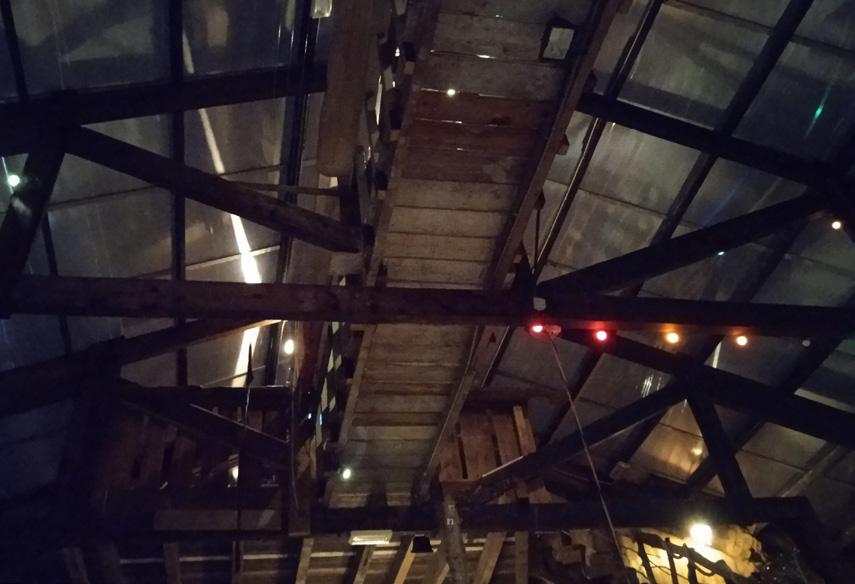

12
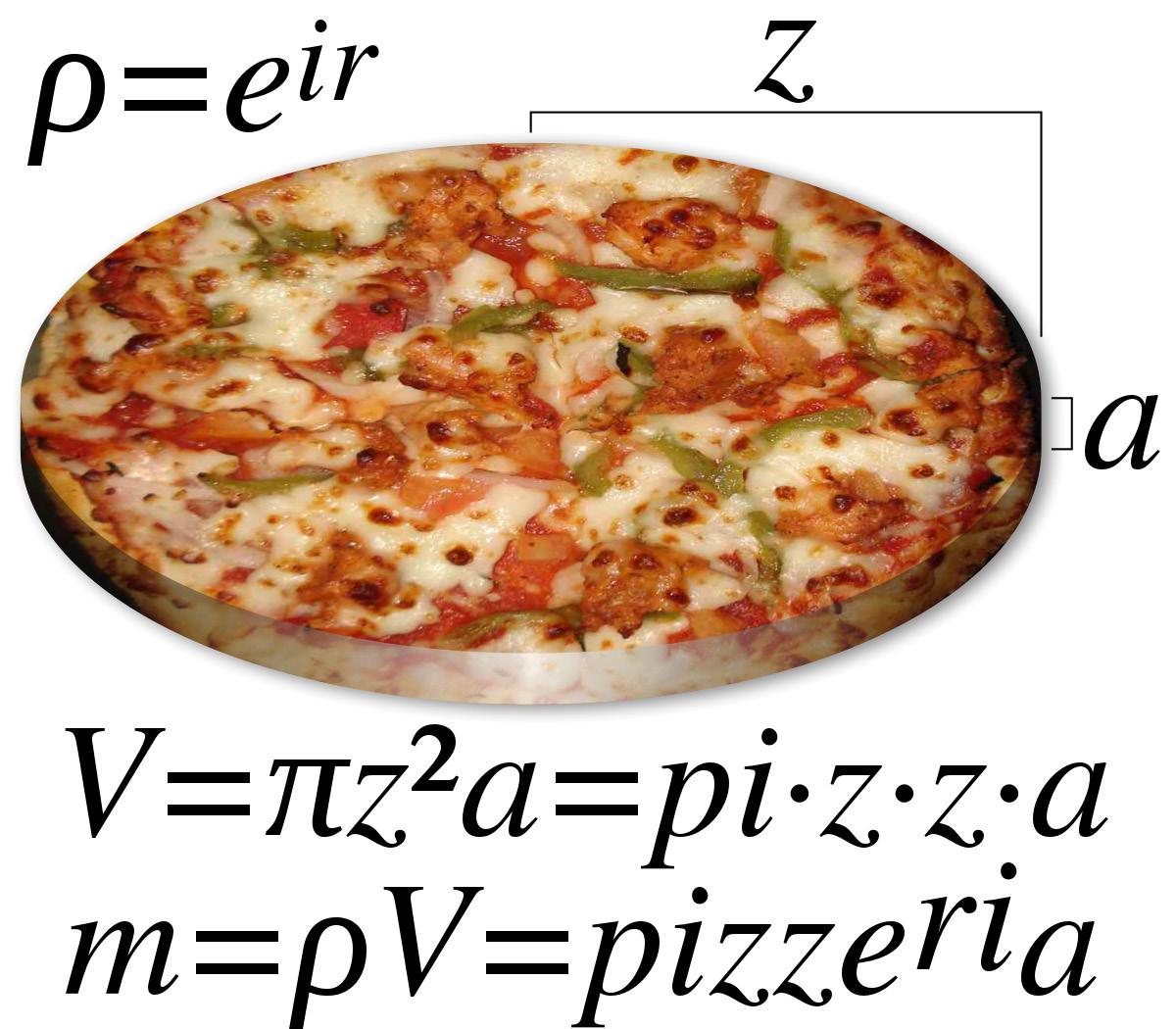
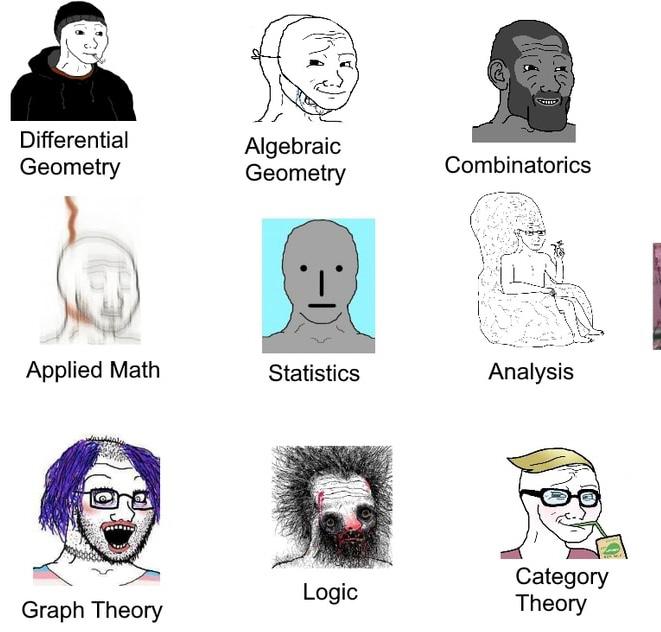
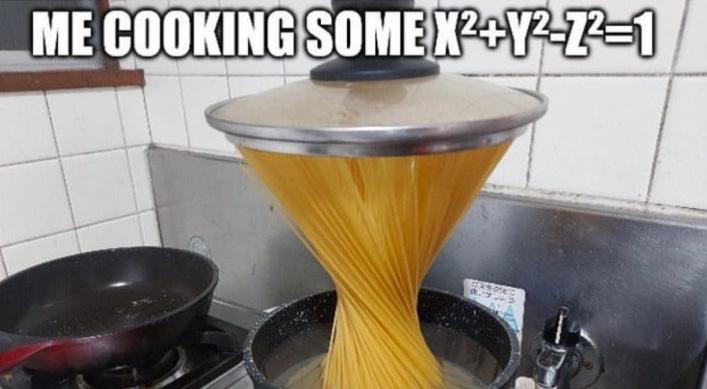
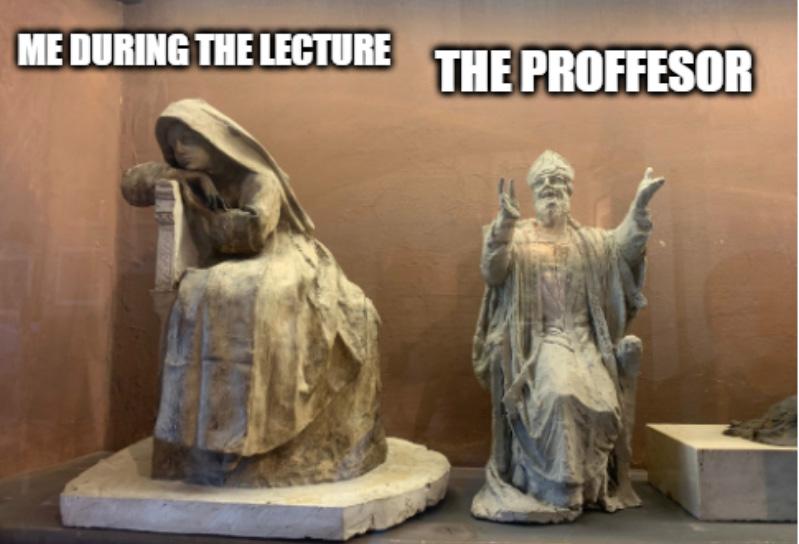

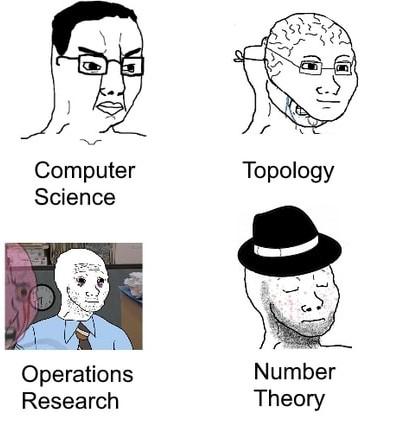
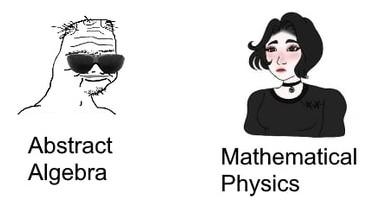
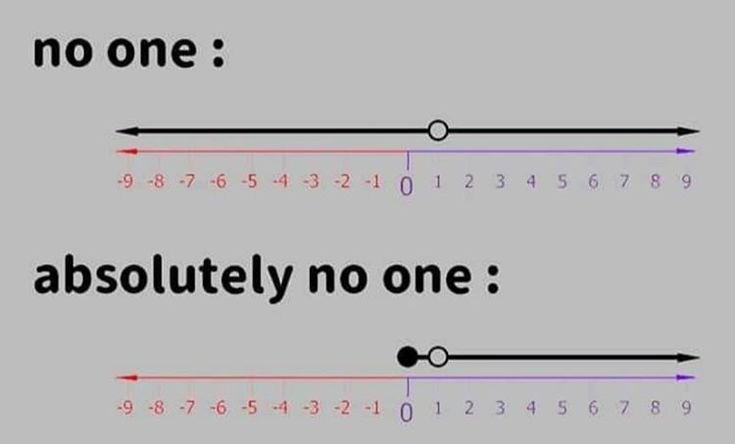
13 Meme page


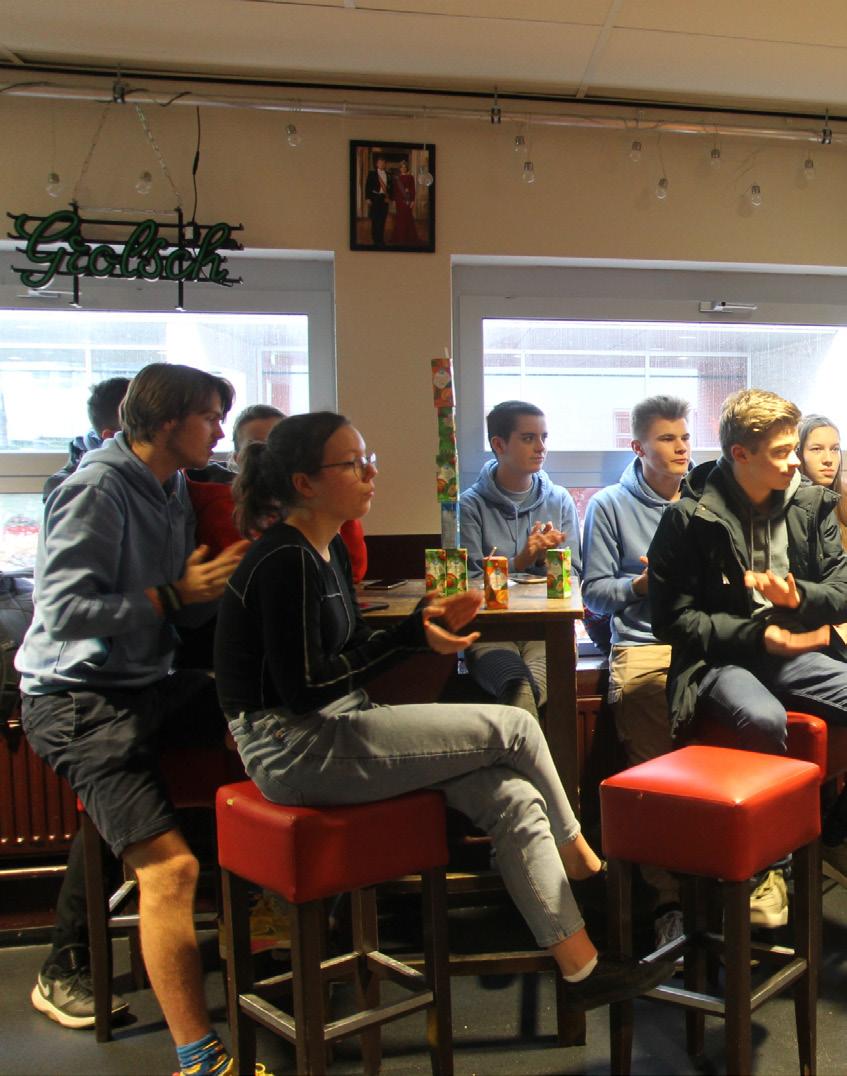

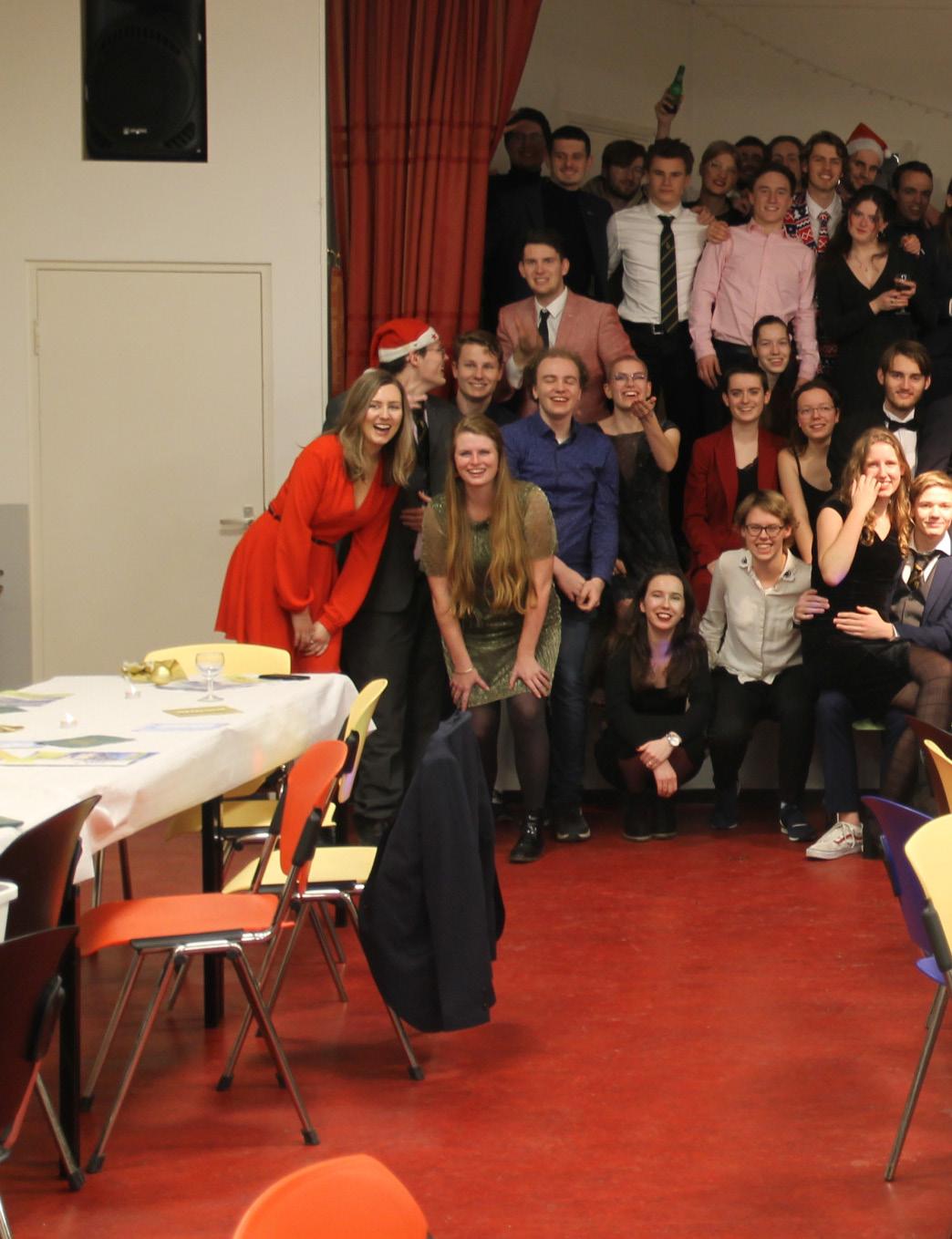

14
Abacus
Just
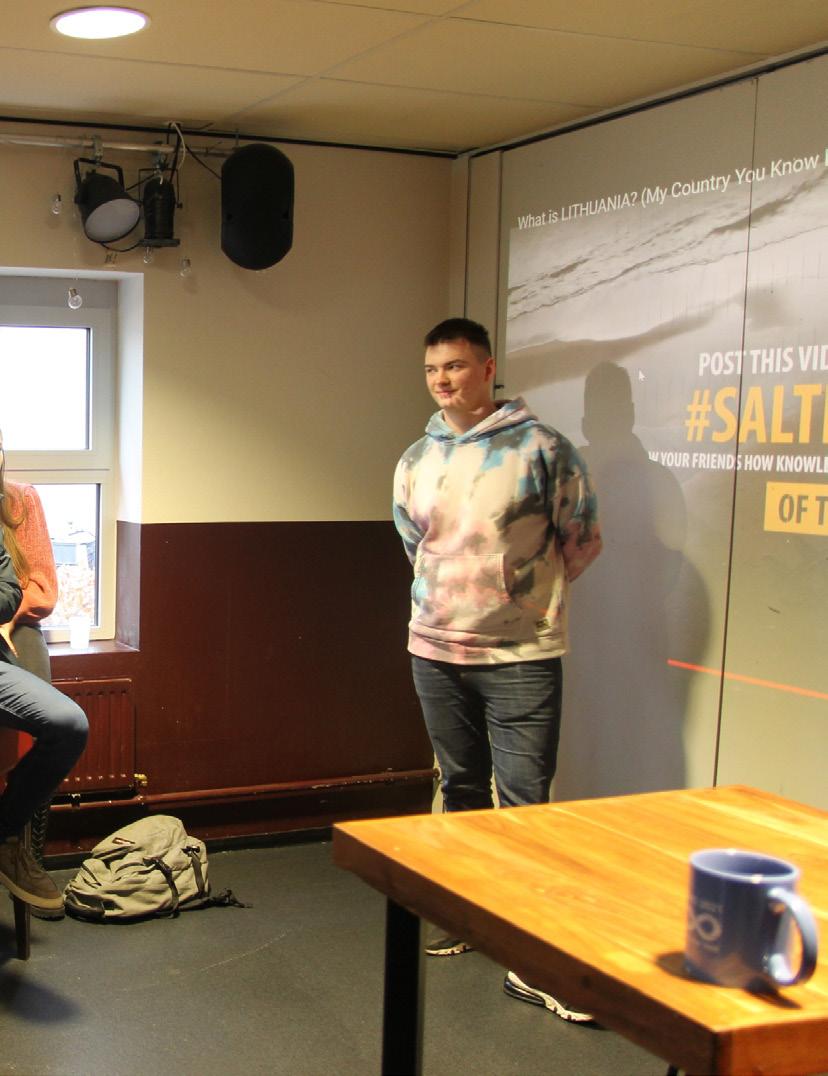
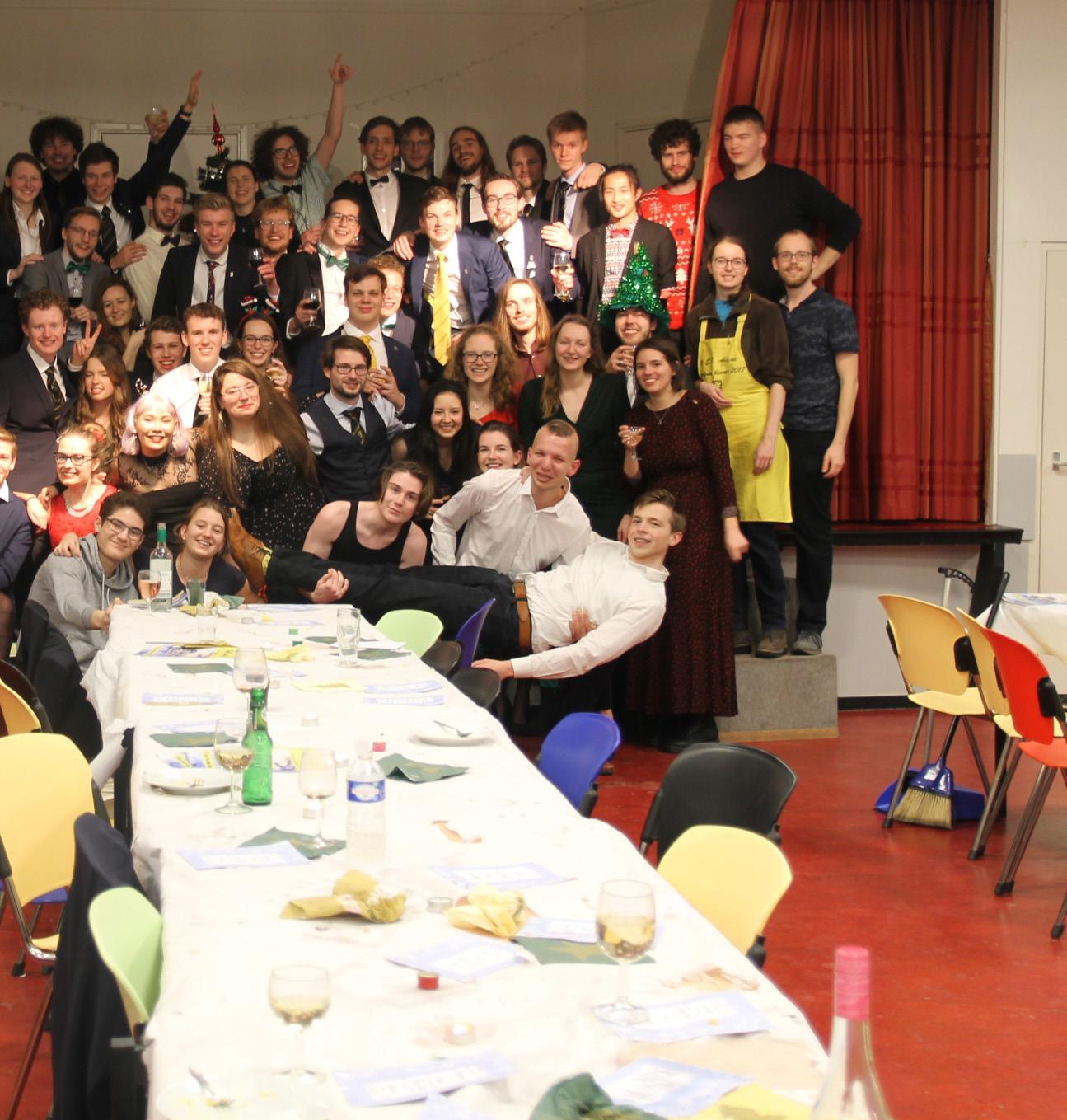
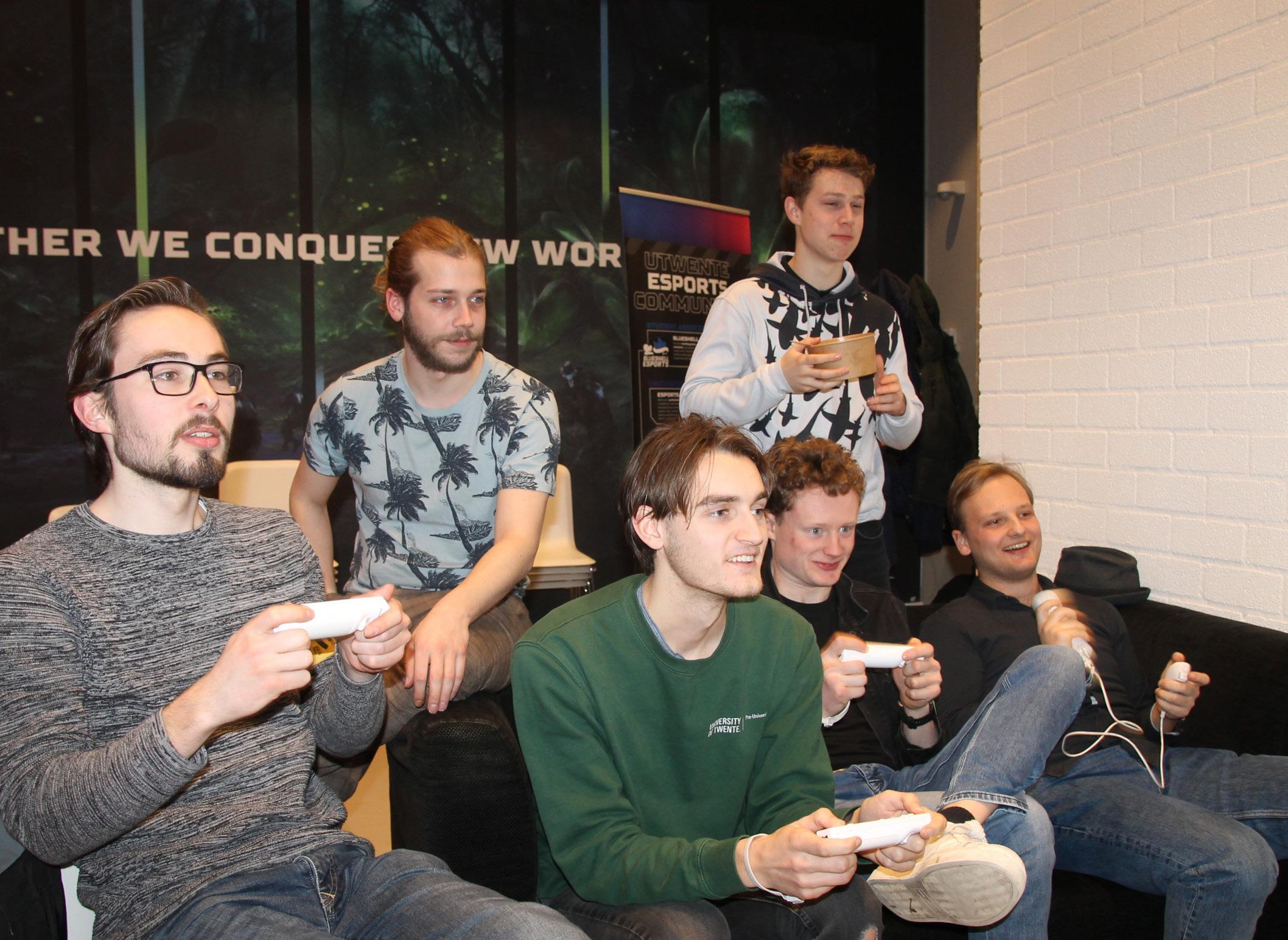
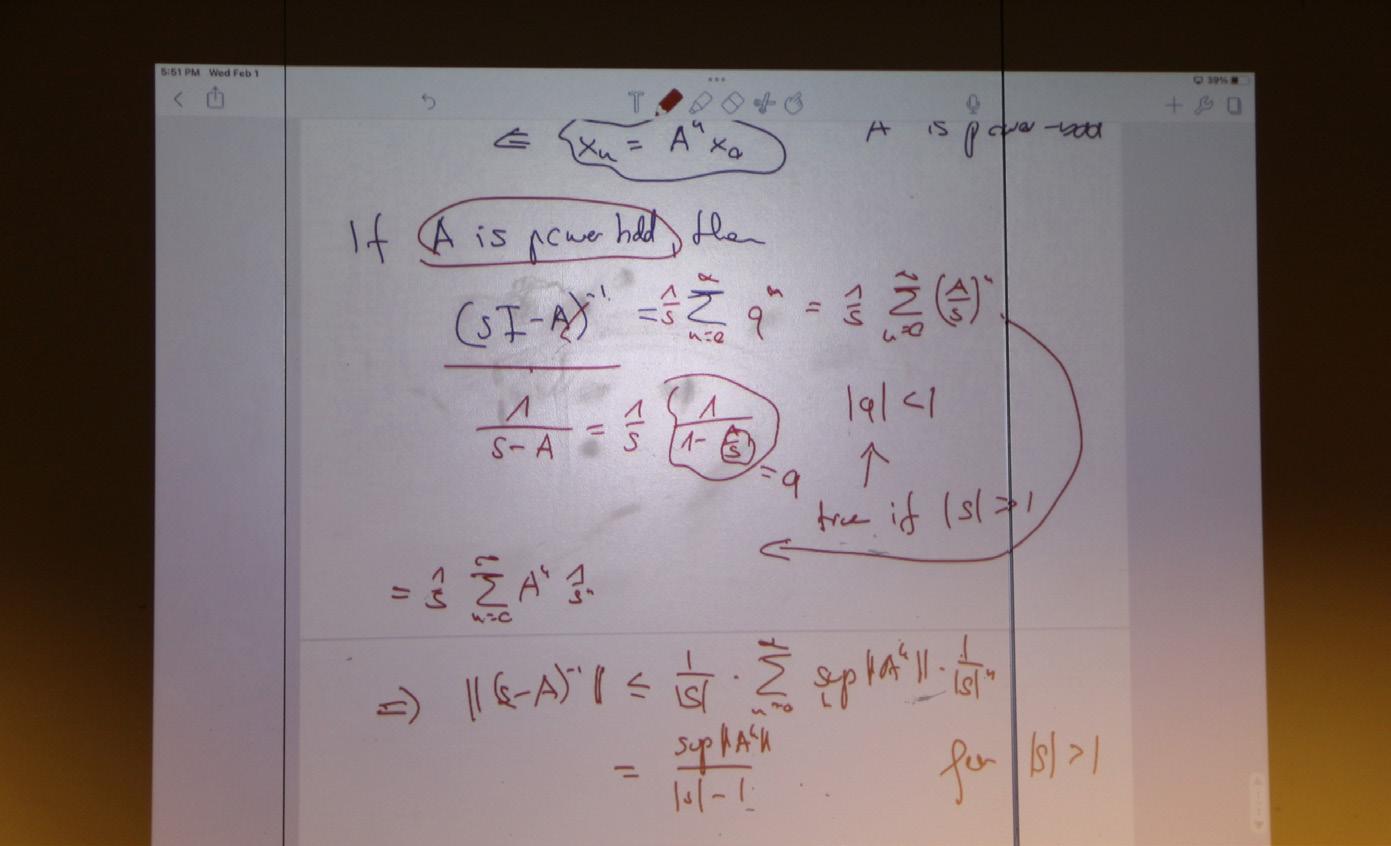
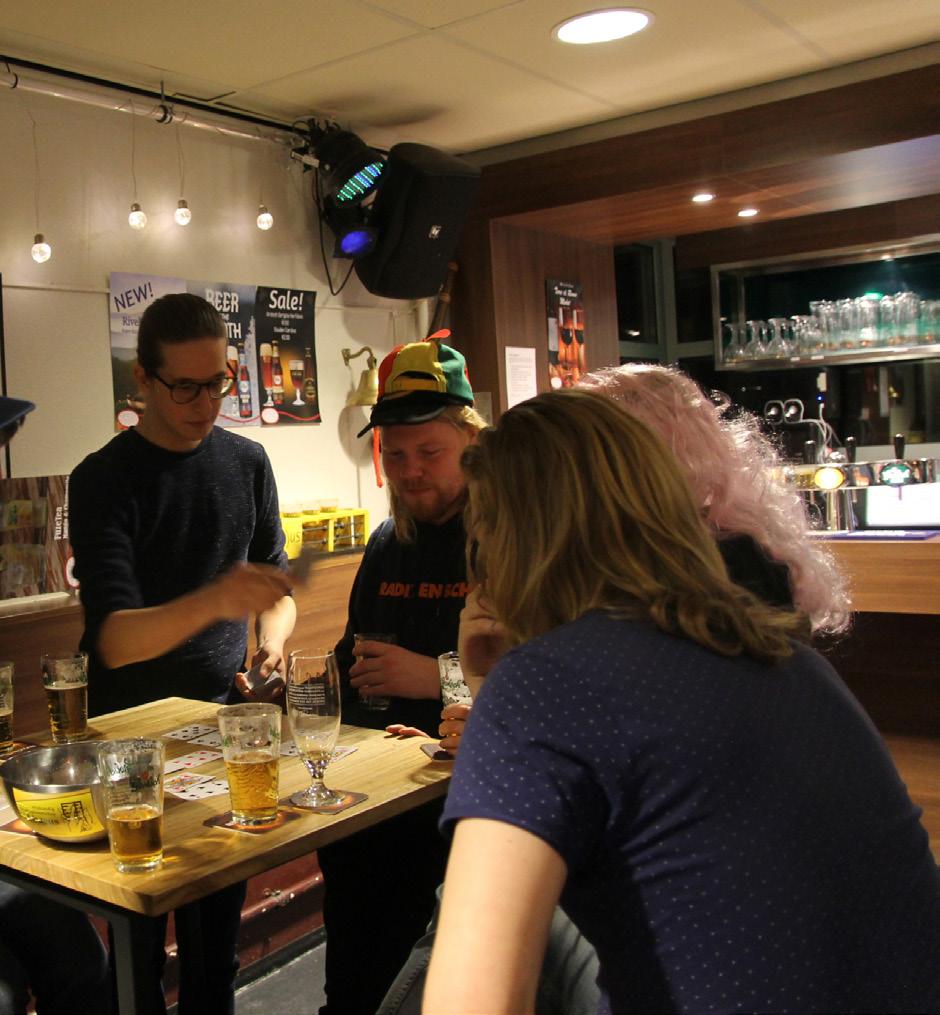
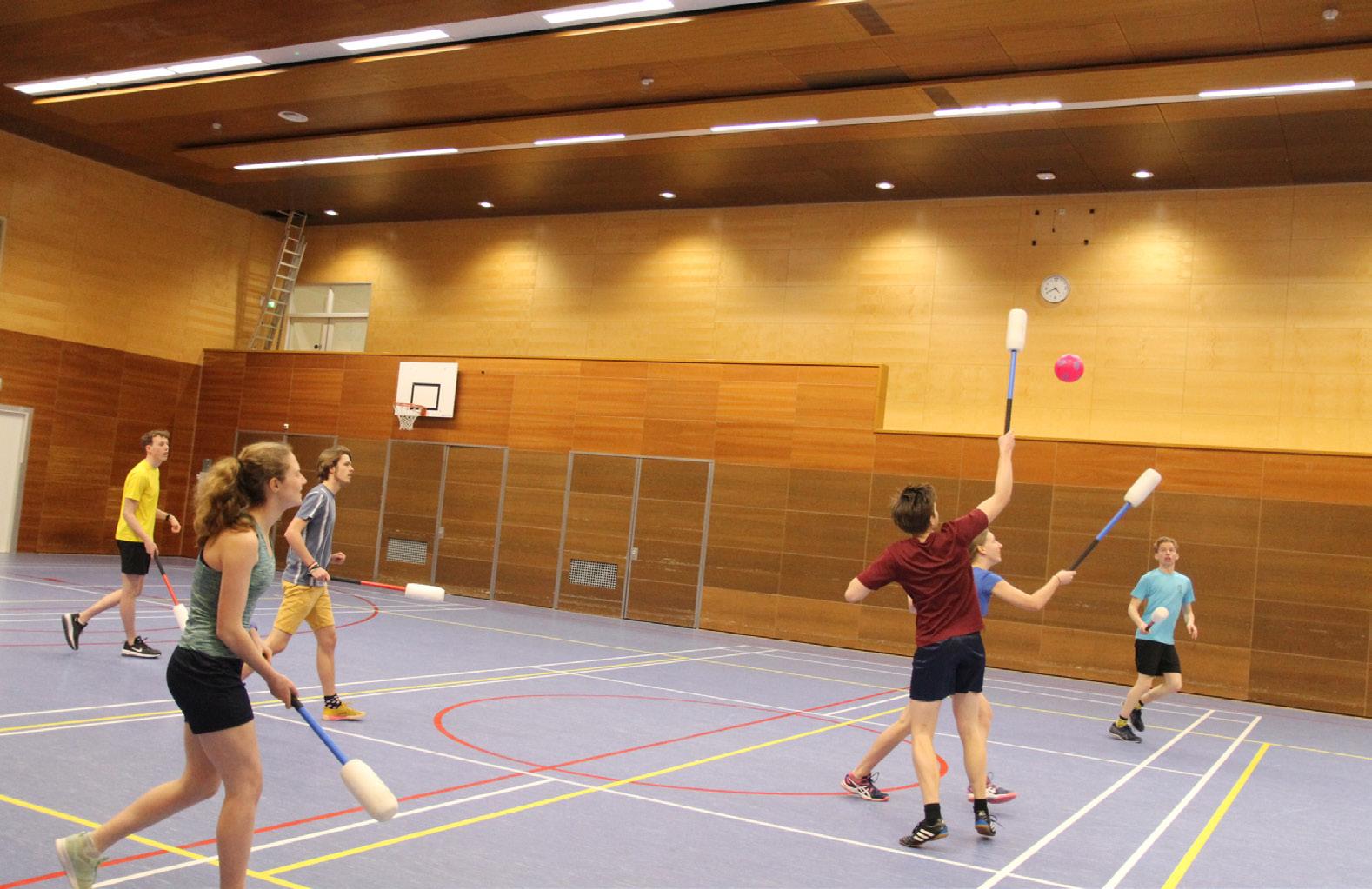
15 Things...
Frequentist vs. Empirical Bayes
Text: Wei-Ting Sun

I wrote my Bachelor's thesis last year, titled "Frequentist vs. Empirical Bayes: A comparison of procedures for high - dimensional two-sample statistical inference, in particular for microRNA data" — you can read it at https://essay.utwente.nl/92207/.
I've been invited by Ideaal! to share with you what I've done. Let's get started!
The problem
MicroRNAs are short strands of RNA that affect gene expression, and nearly 2000 human microRNAs have been identified. They can be found in bodily fluids at relatively consistent levels for healthy people, even across individuals. At the same time, research has shown that their levels can correlate with the presence of diseases, such as cancer. Because bodily fluids can be extracted easily, microRNAs have the potential to be used to non-invasively diagnose cancer.
However, to be able to do that, researchers still need to figure out which microRNAs correlate with which types of cancer. Luckily, this question can be tackled with a statistical approach. I was given a dataset containing two groups of subjects — people with lung cancer and healthy people — with data on their microRNA levels for many microRNAs. How can we then classify the set of microRNAs into two types: type 0, those with effectively the same distribution of microRNA levels for the two groups, and type 1, those with significantly different distributions of levels between the groups (which can potentially be used to test for lung cancer)? This kind of problem is called an unpaired two-sample statistical inference problem, and there are different statistical methods used to solve this problem. This is where my bachelor's thesis comes in — in
my thesis, I compared two such statistical methods: the frequentist and empirical Bayes approaches.
Frequentist vs. Bayesian statistics
Before we compare the two methods, we need to first understand what the words "frequentist" and "Bayes" mean. Frequentist and Bayesian statistics are two approaches to statistics, and they differ in some fundamental ways.
Frequentist statistics is based on the following core ideas:
• The "probability" of a random event is the limit of the relative frequency of the random event happening as the number of samples goes to infinity.

• All model parameters (e.g. the μ and σ2 of a normal distribution) have fixed values, even if they are unknown to us.
A direct consequence of these ideas is that in frequentist statistics, it does not make sense to talk about the probability of a parameter being a certain value — to quantify our knowledge of parameter values, we use concepts such as p-values, hypothesis testing, confidence intervals, etc. If you've taken a statistics course, this should be familiar to you — the statistics taught in the bachelor's program (i.e. Mathematical Statistics in Module 5) all fall within frequentist statistics.
On the other hand, Bayesian statistics uses a different conception of the concept of "probability". Its core ideas are:
• The "probability" of an event is the degree of subjective belief of the event happening.
• Probabilities can be updated when new information is available using Bayes' rule: the probability of event A can be
updated, if we know that event B happened, using the formula
In contrast with frequentist statistics, there is nothing stopping us from talking about the probability of a model parameter being a certain value — for example, if we have a normally distributed variable X ~ ��(μ,σ2) with unknown parameters and we know that its mean should be close to 0, it makes perfect sense to express that as
or even
In fact, the distribution of the model parameters in Bayesian statistics serves the same purpose as p-values and confidence intervals in frequentist statistics.
Empirical Bayes is a term describing methods that use the Bayesian statistics framework, but for some model parameters, instead of describing its value using probability distributions, it uses an empirical estimate for the value. This simplifies the problem, at the cost of being non-exact.

As you can probably see, these two approaches to statistics are quite different, and so a natural question to ask would be "How do their results differ in practice?" That is exactly what I investigated in my bachelor's thesis.
Procedure
I won't describe how the two methods work in detail here — it's not that important, and if you're interested, you can always read my thesis. What's important is that the output of both methods is a scalar value P between 0 and 1 for each microRNA that quantifies how confident the method is that
16
the microRNA has effectively the same distribution between groups — close to 1 if the distributions are effectively the same, and close to 0 if they are significantly different — and we classify microRNAs as type 1 (different distributions) if and only if P ≤ α for some constant α. However, this classification has different interpretations between the two methods. In the frequentist method, the value P is what is called the Benjamini–Hochberg adjusted p-value — the normal pvalue is calculated, then adjusted for the fact that many microRNAs are investigated together, using the Benjamini–Hochberg procedure — you will learn about this if you take the elective course Simultaneous Statistical Inference. Using this method, the classification satisfies where 0/0 is interpreted as being 0, and in probabilistic terms, it is roughly equivalent to
made to resemble the actual microRNA dataset. The simulated datasets differ by 4 parameters: the number of subjects (patients) in each group m, the number of microRNAs n, the maximum amount of deviation between the microRNA levels of the two groups c, and the number of microRNAs with a big deviation between groups a. That resulted in a total of 272 simulated datasets. I then applied both procedures to each dataset, with the classification level at α = 0.05, and compared the results.
Results
With the empirical Bayes method, on the other hand, the scalar P has a more straightforward interpretation, namely the probability that the microRNA has is of type 0, given its microRNA data. This means that when classifying the microRNA using this method, it holds that

The first thing to note is that the outputs of the two methods do not correlate strongly with each other. Figure


Notice that, despite the two methods stemming from different conceptions of probability and employing different statistical techniques, their classification false positive rate should be around the same, and so we should expect the two methods to classify the microRNAs in similar ways.
To compare the two methods, I applied them on simulated datasets
1 shows the histogram of the correlation coefficient between the values of P between the two methods for all 272 datasets, and while the correlation is positive for most datasets, for a large portion of the datasets this is close to 0.


In Figure 2, the output values P of the two methods are plotted against each other for one dataset — the dots are all over the place. Hence we conclude that while in theory
the two methods should produce similar results, in practice they do not, though this is likely largely due to differences in the details I chose to implement in the two methods,
17
Figure 1: Histogram of the Spearman's rank correlation coefficient ρ between the values of P of the frequentist and the empirical Bayes of the individual datasets of the simulated data.
Figure 2: Scatter plot of the frequentist and empirical Bayes values of P of one of the simulated datasets.
and not due to the conceptual differences between frequentist and Bayesian statistics.
Now on to the results of the analyses. To illustrate and compare the performance of the two methods, for each dataset I plot the "type 1 classification rate" (the probability of classifying a microRNA as type 1) as a function of the actual difference between the microRNA levels of the two groups underlying the simulated data. Figure 3 shows how this plot changes when varying m (the number of patients per group) and n (the number of microRNAs), and Figure 4 varies c (the maximum deviation between the microRNA levels of the two groups) and a (the number of microRNAs with a big deviation between groups).

From the plots, we observe the following:
• For small m, the frequentist method tends to classify microRNAs as type 0, while the empirical Bayes method tends to classify them as type 1.
• As n increases, the frequentist method tends to classify microRNAs as type 0, while n has little effect on the results of the empirical Bayes method.
• The parameter c has little effect on results of the frequentist method, while the empirical Bayes method tends to classify microRNAs as type 1 as c decreases.
• The parameter a has little effect on either procedure.
In general, the results show that the empirical Bayes procedure performs better than the frequentist
procedure at classifying microRNA with large deviations between groups when the sample size m is small. However, the empirical Bayes procedure is less consistent in its classification, and the frequentist procedure overclassifies variables with a small deviation between groups as being of type 0.
At the end, I revisited the real microRNA dataset and applied the two methods on it. The frequentist method classified all microRNAs as type 0 (effectively no difference) at α = 0.05, and at α = 0.5, it classified three microRNAs (hsa. miR.204.3p, hsa.miR.424.3p, and hsa.miR.509.3p) as type 1. The empirical Bayes method, on the other hand, classifies only hsa. miR.10a.5p as type 1 at α = 0.05, while for α = 0.5, it classified most (1067) microRNA as being of type 1, which obviously cannot be right.
Figure
Type 1 classification rate curves (solid = frequentist, dashed = empirical Bayes) with varying number of subjects per group m and number of variables n. For all plots, c = 4, a = 64, and α = 0.05.
Figure 4: Type 1 classification rate curves (solid = frequentist, dashed = empirical Bayes) with varying c and a. For all plots, the number of subjects per group m = 80, the number of variables n = 500, and α = 0.05.

18
3:
I thus concluded that these four microRNAs are candidates for further research into lung cancer biomarkers.
Some final thoughts
While this Bachelor's thesis topic was initially advertised as having multiple comparisons — the thing with the Benjamini–Hochberg procedure — and the challenges of high-dimensional data be the focus, my advisors allowed me to pick really any topic related to the microRNA problem, and being a big fan of Bayesian statistics, I decided
Staff Says
to go for a frequentist vs. Bayesian statistics focus for my thesis.
When I was writing my thesis, I really struggled with time management, so I ended up, during the 3 weeks before it was due, scrambling every day to finish getting results, thinking about the analysis, and writing all at the same time. After I was done, though, I felt somewhat disappointed, as unlike more pure math theses where you prove some theorem(s), mine didn't contain any strong results — it was at best "oh, this particular method works a bit better in this specific
Text: Maria Christina van der Weele
Back to Twente
My name is Maria Christina van der Weele and in September 2022 I started working as a lecturer at the Department of Applied Mathematics of the University of Twente. I was asked to write this column since I am a new staff member, and I thought it might be a nice way of introducing myself to all of you.
I was born in Enschede nearly 30 years ago, to a Dutch father and a Greek mother. I spent 11 happy years in Twente until I moved to Greece together with my family. More specifically, we moved to Patras, which is a city on the Peloponnese on a narrow strip of land between the sea and the mountains. This is where I went to secondary school and later also to university. During my undergraduate studies I focused mostly on Pure Mathematics and I participated in several Mathematical Olympiads.
For my MSc I was admitted to the University of Cambridge, where I was fortunate enough to be award-

ed a scholarship. The master’s programme has a duration of one year (effectively condensed in less than 9 months) and is called “Part III of the Mathematical Tripos”, after the fact that in the past candidates took the exams seated on threelegged stools or tripods. That year was one of the most beautiful and challenging of my life. On the one hand, studying in Cambridge was filled with Harry Potter-like scenes and being pervaded by the scientific history of the place, with giants like Newton, Darwin, Maxwell, and Hawking, to name a few; the latter was still very active at the Department of Applied Mathematics and Theoretical Physics (DAMTP) when I was a student there. On the other hand, Part III is an incredibly intense and tough master’s programme, which hardly left me any time to do other things than studying, studying and studying.
After my graduation, I stayed on in Cambridge and did my PhD there under the inspiring supervision of Prof. Athanassios Fokas. It was at this time that I developed an interest for the field of Partial Differential Equations and, more specifically, nonlinear integrable systems.
case than that other particular method… maybe", and I wasn't very satisfied. But because of this, I hope that for my master's thesis, I can get things done with better time management, and tackle a topic where I can obtain more substantial results!
These systems are highly non-trivial, being nonlinear and dispersive, yet it turns out that they have special properties which allow them to be solved analytically. Among the solutions they admit, probably the most celebrated ones are the socalled solitons, which are strongly stable wave solutions that play a major role in shallow water flow, optical fibres, and other fields.
And now, after having been away for 18 years, I am back in Twente! This is really what you call the Circle of Life.
During my years in Cambridge, I found out that I very much enjoy teaching in an academic environment. Hence, I am very happy with this lecturer position at the UT. My colleagues are all exceptionally nice and I enjoy the international vibe. So far, I have been teaching mainly to students from other departments, but I am very much looking forward to meeting also the maths students of the UT. Hope to see you soon!
19
Text: Eva van Laar
Last Christmas I was lucky enough to be invited to spend my Christmas break in Milan thanks to the kind invitation of Lavinia. So along with her two cats (Storm and Wolf), I was driven all the way to northern Italy. During the two weeks I stayed with Lavinia’s family, I learned a lot about Italian food culture and visited many iconic sites in the city.
The largest culture shock for me was the times people eat food. Italians tend to eat lunch in the middle of the afternoon from 13-15 o'clock in the evening and as a result, dinner is also much later around 8-9 in the evening. This was a difficult adjustment for me but I could not complain because every meal I had was amazing. I had been told that real Italian pizza is much different than the American pizza I was used to back in the states but I did not realize the extent of that difference until I experienced Italian pizza for
The Pen
Text: Daan Velthuis
Whenever I turn on the TV, I am confronted with people more successful than me. Whether it be businesspeople or football players, every time someone who has done something special enters the frame, I hear my grandpa’s words echoing in my head: “Why haven’t you done that?”. I always had the same excuse ready: “They are 10 years older than me, I still have time.”. However, this December this excuse was no longer valid when I visited my first E-sports LAN.
As some people might know, I am a huge fan of the game “Rocket League”. It is a very simple game to understand. It is football with a car;
the first time. The pizza dough is lighter and as a result, you are able to eat much more of it. There are also more creative combinations of toppings. For instance, in one restaurant I had a pizza topped with thinly sliced smoked ham, basil, walnuts, walnut sauce, and cheese. These pizzas are so packed with toppings that it makes sense that many use a knife and fork to eat them.

Another cultural difference was the coffee culture. As someone who doesn’t drink coffee, I cannot comment much on this but I have never seen people drink coffee so often, it was offered after lunch and after dinner. But as a hot chocolate connoisseur, I can say that the thick and rich hot chocolate of the Italians is far superior to most hot chocolates I’ve had. If you ever get the opportunity it is highly recommended.
The city of Milan is also full of interesting sites. On my trip, I went to the Duomo, a unique beautiful

church made of multicolored marble. This church took nearly 6 centuries to complete and sits in the center of Milan. We climbed many stairs to reach the top of the church and got an amazing view of the central plaza below. It is also interesting to note that Milan is the home of Michelangelo’s The Last Supper which I wasn’t aware of until I visited. We also visited Castello Sforzesco which is a castle made in the 15th century and now houses many interesting museums including a museum of armory and the Rondanini Pieta Museum which houses an unfinished work of Michelangelo. Overall I would highly recommend visiting Milan if you are able to. The city is full of history, culture, and amazing food.
you control a flying rocket powered car and you need to drive into the ball to hit it into the goal. For this tournament, sixteen teams from all over the world were flown out to compete in Rotterdam, Ahoy. Usually, I watched these kind of LANs at home, but with one being only 2,5 hours away, I decided to go. On Saturday the matches started and now you will see what I was talking about in the introduction. Almost 10.000 people were in the venue and a couple of 100.000 people were watching at home how the first players entered the stage. It were just a bunch of kids. Yes, the best players in the world are almost all under the age of seventeen. If I joined, I would be the second to oldest.
To further show my point, one of the highlights of the weekend was when former World Champion and Dutchie Jos “Violentpanda” van Meurs (shown in the picture) proposed to his girlfriends. Violentpanda has retired as a player at age 23, because you are basically worthless at that point in this game.
This extremely fun event, did make my excuse to my grandpa invalid so now whenever we are watching TV together and he will say to me: “Why is that not you who accomplished that?”, I will just respond: “I am not that talented, grandpa.”.

20 Your Story
About SOR: Stochastic Operations Research
Text: Richard Boucherie

The staff members of the Stochastic Operations Research group (SOR) conduct education and research in applied probability and mathematics of operations research, to contribute to the development of mathematics in a multidisciplinary engineering environment and contribute to a better understanding and functioning of our increasingly complex society. SOR represents the stochastic optimization part of Mathematics of Operations Research within our department. The other parts of MOR are the Discrete Mathematics and Mathematical Programming group headed by Marc Uetz and the Statistics group headed by Johannes Schmidt-Hieber. SOR is partly responsible for the Operations Research and Data Science tracks in the master programme Applied Mathematics. SOR is responsible for module 8 and SOR members teach several courses in other modules of the bachelor programme.
Stochastic operations research aims at the development of mathematical models and methods for the design, control and optimisation of complex systems that are subject to randomness. SOR covers a wide range of topics that is best illustrated by letting all group members pitching themselves.
• Richard Boucherie: I am head of SOR, and responsible for your master programme if you select SOR. My mathematical research interest is queueing theory, in particular queueing networks. Note surprising, I teach the courses queuing theory in module 8 as well as queueing theory in the master programme. I founded the Center for Healthcare Operations Improvement and Research (CHOIR), where I develop mathematical decision solutions that match demand for healthcare with the scarce
capacity to provide the right care to the right person at the right place. I also implement these solutions in hospitals to make healthcare healthy.
• Aleida Braaksma: I develop mathematics to optimize healthcare logistics. My dream is that one day patients will be enabled to schedule their own appointments, while the underlying mathematical models guarantee near-optimal schedules for all patients as well as all healthcare providers. From a mathematical perspective, I am thus interested in sequential decision making under uncertainty. I teach Stochastic Dynamic Programing in Module 8 and Markov Decision Theory in the master.
• Jasper Goseling: My research currently focusses on privacy and bias issues arising in artificial intelligence and data science. Using tools from information theory and operations research I develop mathematical frameworks that can be used to obtain insight into problems with current applications, but also to offer key techniques that can be used to resolve these problems. I teach an MSc course on Information Theory and Statistics. Also, I manage the DS&AI Lab of the faculty, through which we offer opportunities for short applied projects with companies in the field of data science and artificial intelligence.
• Marie-Colette van Lieshout: My research interests focus on spatial statistics. Can we quantify the risk of an earthquake in a given region during the coming year? Can we map spatial information in such a way that privacy is respected? Can we relate socio-demographic information to the occurrence of arson fires or burglaries to guide the police's capacity planning? I teach
a Master course and supervise student projects on this topic.
• Nelly Litvak: I study complex networks, such as social networks and the World Wide Web. I am interested in design and mathematical analysis of algorithms that help us understand network data, for example, ranking nodes by their importance, finding clusters and communities, and predicting how opinions or epidemics spread on a network. I teach Linear Structures 1 in our Bsc program, and Complex Networks in our MSc program. I love teaching and I always work on new teaching methods that, I hope, help students think and learn deeper. I also wrote two books about mathematics for a broad in Russian (my native language), and co-founded a Facebook group with 30K+ participants about mathematics for non-mathematicians.
• Janusz Meylahn: I'm interested in the dynamics that arise when multiple algorithms learn in the same environment. The difficulty with this topic is that, from the perspective of a single algorithm, the environment changes as the other algorithms learn and vice versa. I teach the honours course on complex networks, a part of the Web Science module and a course on the theory of multi-agent systems in Highlights of OR.
• Jan-Kees van Ommeren: I am interested in developing stochastic models, in particular queueing related models, to real world situations like port logistics or inventory management. Most of the times, the resulting models are too complicated to solve and approximations have to be found. In the Bachelor, I teach and supervise the project Stochastic Simulation; in the Master I teach the course Applied Queueing Models.
21
• Werner Scheinhardt: Just like you I studied in Twente, both undergraduate and PhD. Most of you know me from the B1 course Probability theory, some also from Markov chains (B2), and a few also from Measure & probability (M1). I enjoy teaching as well as doing research, especially in my favorite field Queueing Theory (which I also teach, but for Mastermath). Queueing is great! Well, at least the theory is.
• Judith Timmer: My research focused on game theory, particularly cooperation under
Review: Esperanto
Text: Timon Veurink
About half a year ago I sat on the train with a good friend of mine who told me she was learning a new language. I asked her what language she was learning and she told me about this artificial constructed language called Esperanto. Telling me all kinds of stuff about it, like that it is entirely phonetic, so that every sound can only be written with 1 letter. This means that double letters are completely redundant, because the short and long vowels are actually different letters and if you would write a letter double, you also have to make the physical sound twice.
Next to that, there are rarely any grammar rules. Which leads to, in my opinion, Esperanto’s biggest strength and simultaneous weakness. The language is extremely intuitive. Which sounds amazingly positive at first, however, there is a compromise to be made here. There is much less of an incentive
uncertainty. Currently, I coordinate our bachelor programme and teach several courses. For example, Alexander Skopalik and I teach the master course Game Theory. Besides, I am involved in various modules in our bachelor programme.
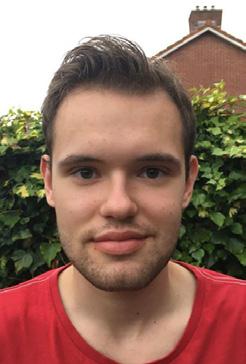
• Anne Zander: I work on methods to solve sequential decision-making problems under uncertainty. I investigate those solution methods with respect to their convergence properties and am especially interested in integrating math programming (for combinatorial action spaces) and reinforcement
learning. My application area of interest is healthcare logistics, especially appointment or surgery scheduling. Further, I teach the Master course reinforcement learning.
The topics and applications covered by SOR members give many directions for research for BSc and MSc students in internships and final projects. Some of these projects may be carried out in companies such as Arriva, Booking.com, DAT. mobility, KLM, NS, Ortec, Rhythm, Thales, TNO, but also in a societal environment such as a hospital.
to learn new words, because words can be figured out on the spot. This leads to words just not sticking as much and many was to work around words you don’t know. Throughout my entire learning experience the language has never stopped feeling like a puzzle to me, which I eventually got a bit tired of.
This intuitiveness makes the language extremely easy to acquire though. The only language next to Esperanto I started learning in my 20’s is Italian, so I will compare it to that. I studied Italian extensively for about 3 months and on and of for a total of 9 months. I studied Esperanto extensively for about 2 month and on and of for about 3 months more. To learn Esperanto I used a free online course called Lernu!, which I would highly recommend. After a month of studying Esperanto I was already so much more conversational than I have ever been in Italian. After studying for about two months I could The Hobbit in Esperanto without too much help from google translate, or at all if I was
okay just not knowing some words. Translating still took a lot of time, but it was doable, I did not reach the level where I could read it enjoyably.
The reason I eventually stopped learning Esperanto was that after you have learned all the grammar, the only way to improve is more exposure and just grinding away at wordlists. In the beginning I was okay with this, but eventually it falls into a trap all languages suffer from, that words are very specific. So learning a new word just doesn’t impact your language ability all that much anymore, you need to learn hundreds to really notice the difference. Eventually I just lost motivation. However, I would still very highly recommend learning Esperanto. It gave me so much more insight in how languages are build and how they work. If I ever find the motivation to learn a new language, I believe I am going to benefit from learning Esperanto first.
22
We had the pleasure to spend some time and speak with Jeroen, who you may know from Xerox Carré. He allowed us to spend an afternoon there to understand the work that goes into printing everything Xerox is responsible for.
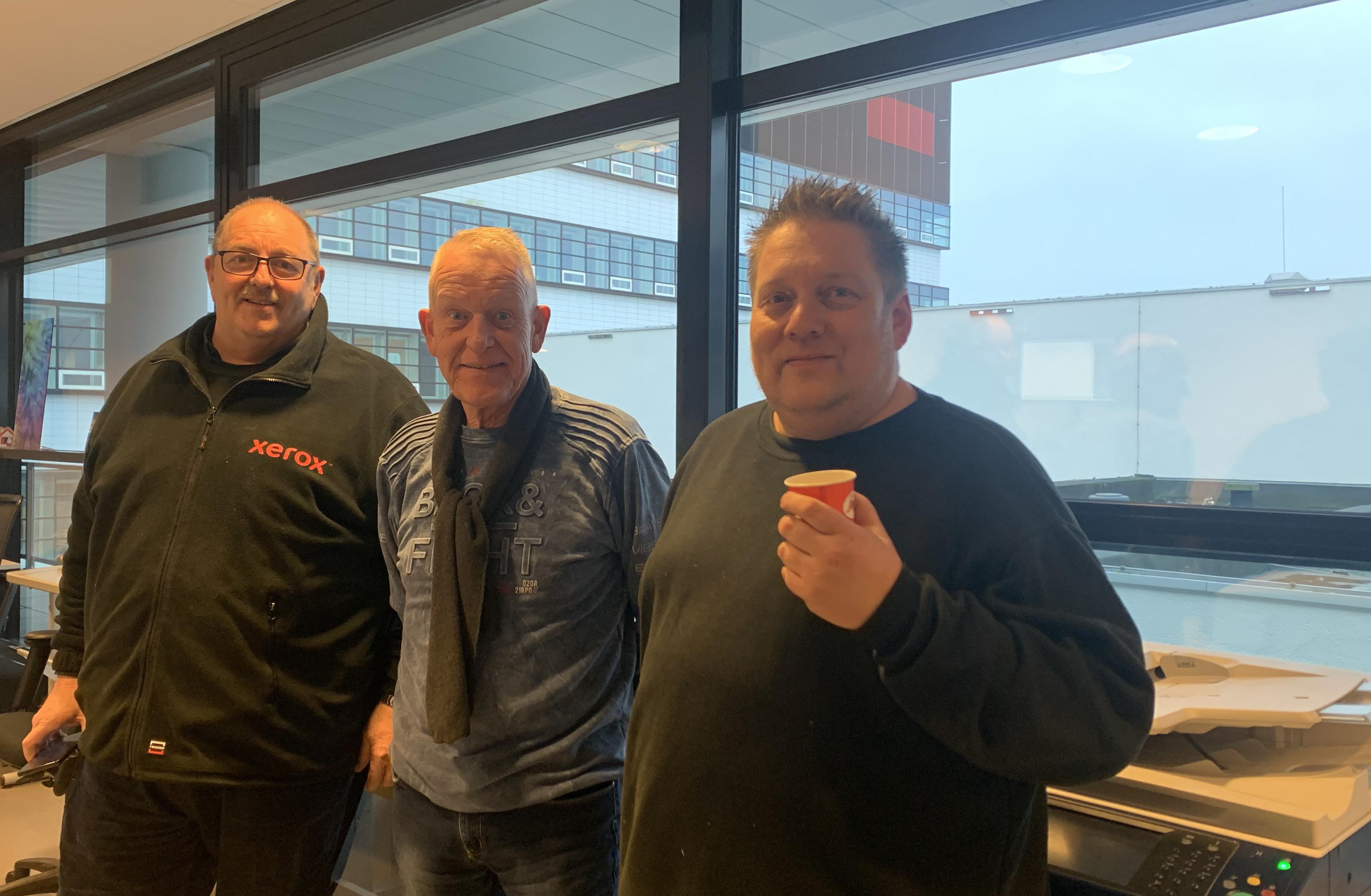
If you have ever been reasonably active at Abacus, you must know Xerox Carré: the place where all of the posters promoting Abacus activities that hang around the Abacus room are printed and carefully cut. Most important yet, this is the place where each edition of the Ideaal!, including the puzzle booklets from the past two years, are printed and put together into the wonderful magazine you are currently reading. Recently we were allowed to spend an afternoon on the other side of the desk of Xerox and to see for ourselves who exactly is behind all the print work taking place there and just what machinery they utilise to make all of it happen. More specifically, we spent an afternoon together with Jeroen Oosterbeek, Xerox Service Coordinator, who gave us insights into how everything works and kindly answered all of our questions.
Xerox Carré is a small corner placed atop the stairs from Hal B to Carré. “It is a small booth where lots of things happen. We print about
anything: flyers, posters, business cards, readers, you name it. I work here with Hans, while Craig takes care of maintaining the printers around campus. Xerox itself also has a toner factory in Venray of about 2000 m2 where many documents are produced for the tax authorities (‘Belastingdienst’).”
All print work is done with multiple machines, which are all linked to one another through the network of the university and each printer has specific tasks it can carry out. This is mostly due to the fact that the printers themselves are rather small, but each one is placed atop big paper drawers and has appendages which make booklets or sews pages to each other.
“Years ago, Xerox was situated in Zilverling and Horst, but then moved to Carré and Ravelijn, which at the time was still the old Ravelijn building. After the building was brought down and renewed, only Xerox Carré was left over, but we have over 10 printers spread across the
campus that are available for students to utilise. Their location may be found on the university website as well as on the side of one of the printers. You are probably familiar with the one just outside SmartXP.”
Jeroen has now been working for Xerox at the University of Twente for the last 16.5 years.
“Before that I worked for an insurer and for UWV on basis of temporary employment. I mostly worked in archiving the modernisation and digitalisation of it. I helped change the system from alphabetical to a random one with a software able to find items within the archive.”
It is during this time that Jeroen first got interested in printing.
“When I was working for an insurer, I often ended up helping out with the printing press due the amount of free time I had. I learnt a lot from doing this and I started wanting to work in this area, but I also wanted to work in a fun environment. I am very happy I found the UT at that time. I think this place is truly fantastic: the campus is beautiful and
23
A Day With...Xerox Carré
Text: Eva van Laar and Lavinia Lanting
loads of lovely people work or hang out here. It must be said, though, that we are but a small isolated island within Xerox: almost nobody knows us and I myself know about 20 people in total working for Xerox aside from Hans and Craig.”
Jeroen has been asked in the past to give an online presentation for Xerox on what Xerox Carré is like, what happens here and how the work here is. These sorts of presentation had, up until that point, always been given by somebody from the headquarters.
“After this presentation I told the director of Xerox to come visit our little island once, if possible, to see what it is like to work so closely with customers on small scale instead of always talking about big clients. At the time we also did not have the best of managers, so I also took the chance to mention this and we now have a great manager.”
“The work here is very fun in general, as I am also allowed to utilise my creative. For instance, sometimes people will come to us with some kind of an idea, but without any clear concept of what the final product should exactly look like or of what could be done differently to improve upon their idea. This is the type of work that I truly like: working together to find a solution and being part of the creative process are aspects of this job I really enjoy. Printing exams, on the contrary, is very boring: double sided with a stapler clip.”
Xerox Carré knows both very busy
days during which the printers are constantly at work and other days during which everything goes smoothly and which give the team working here a kick to continue.
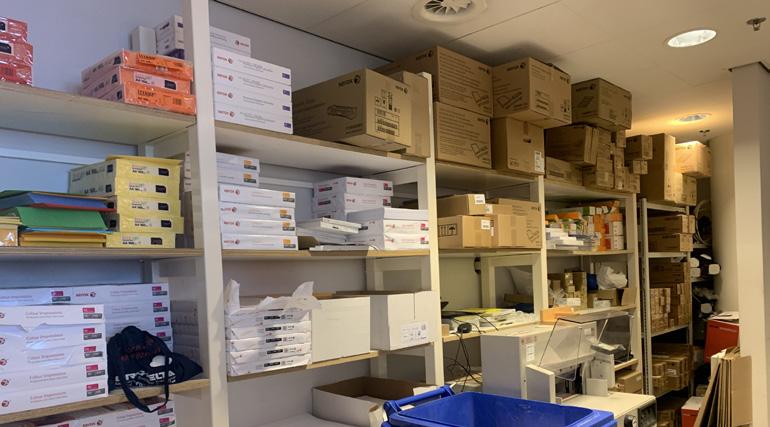
“On such less busy days I have time to come up with new ideas, which is what I like most. For example, I was recently looking into printing on canvasses, but the material is quite difficult to get in spite of the fact that many would like to have it, since it’s easy to carry around. I recently tried out printing on cloth and obtained some very good results, so I believe this could be a great alternative.”
“Inter-Actief prints the most out of all of the study associations, but that is also because they are the ones commissioning those standing triangular prisms on which the monthly activities for Inter-Actief, Abacus and Scintilla are printed. Abacus could very well be the second or third association in terms of amount of printing, but I have to say that this has changed with the years. Years ago association would print only a few A3 posters and the flyers were printed for everything, so the amount of printing we do has lowered slightly. This is also due to the fact that the study load has increased, so people do less committees and flyers waste a lot of paper while being very often just thrown out, so they are not as effective, but we still print a fair amount. We only truly saw a difference two years ago: it was so boring without anybody around on campus. My main task was just to repair printers every once in a while in a dark and empty university.”
The staff at Xerox Carré has sometimes slightly adjusted posters. “We had this ongoing joke with Roel de Jong, from Abacus. We kept on adding him onto posters in the background after he had left the
university to go travel the world. It confused many people. We also once decided not to print a poster for Scintilla as a scantily dressed lady was present on it.”
The company Xerox is responsible for many more things than one would initially expect. The huge banner hanging on Spiegel, for example, is also printed by Xerox.
“I would not want to work for the headquarters. Each person there has a very specific function, so work would get repetitive very quickly. Here there is diversity. Yes, it is chaotic sometimes and sometimes we have to solve many problems all at the same time, but the work is fun! The very busy days also almost always happen when exams need to be printed, as those requests usually all arrive together at once.” On average staff members commission Xerox Carré more often than students, but the difference is very small.
Machines at Xerox Carré
Jeroen himself possesses a tiny printer for which the remained toner from bigger printers is utilised, so as to optimise the use of each toner card. Xerox Carré posses further quite a lengthy list of machines that were showed and demonstrated to us. These include:

• Binding machine;
• Laminating machine;
• Puncher;
• Slicer.
“Keep coming to Xerox Carré! The study associations are what makes the atmosphere here so much fun, varied and friendly.”
24
Review: A.D.S.K.V. Slagvaardig
Text: Jasper de Jong

Unlike articles about well-known sports like soccer or running, I should start explaining what knotsbal is. When talking to Dutch people, I usually start by explaining that knotsbal is like hockey, except that the sticks are made of soft foam. At this point they usually say: "Oh, you mean tampon-hockey!", referring to the tampon-like shape of the sticks. However, since this article is also aimed at international students who might not have played tamponhockey in high school (or bouncerball in Germany), I should elaborate a little bit. Also, the name tamponhockey is clearly inappropriate for such a serious activity.
The type of stick makes knotsbal more accessible than hockey: In hockey, if you hit the ball with the wrong side of the stick, it's a foul. In fact, doing something as innocent as lifting your stick too high is a foul. In knotsbal, there is no silly nonsense like that: you just run and hit the ball however you want. You can even smash the ball from the air, as hitting a player with the stick is not the end of the world. In fact, the playing field is even built with volleys in mind, as we have walls instead of lines, so the ball just bounces off them.

Since play is never interrupted by free hits like corners, and since the stick is so hard to wield, the most important qualities to play knotsbal are stamina and ambition: beginners with a little bit of dexterity can quickly beat more experienced players, simply by running faster and longer.
Knotsbal started at the UT when the board of the sports umbrella organization introduced themselves to the board of the other sports associations, by challenging them to a sports no-one knew how to play: knotsbal. Associations liked this so much, that they started challenging each other, and so the knotsbal association Slagvaardig was born. There was a huge internal competition with around 20 teams con-

sisting of sports associations, study associations and student houses. We had an Abacus team as well: Abaknots, which won the competition regularly. But then at some point, disaster struck: the union card. Knotsbal was always a fun activity that anyone could participate in with friends at a small cost: We currently don't even have a trainer, so you would only be charged for use of the hall, the sticks and the ball (close to nothing).
However, now you need a yearly 50 euro Union-card to participate. Then, you'll also need to pay 28.50 per association plus the small association fee. While 28.50 per year is still not that much, it is unfortunately too much of a barrier for most students.
Recently, we had an Abacus knotsbal activity, which most people really enjoyed. I think some people might have skipped it to study for exams, but if you are interested feel free to drop by at some other day. Our trainings (which mostly consist of just playing the game) are on Wednesdays at 21:30.
Do send me a message if you want to join: some trainings would be cancelled due to a lack of participants. If we know that you are coming, we can make sure that there are enough people for a training.
25
Review: Pokémon Violet
 Text: Xanti Lizanzu
Text: Xanti Lizanzu
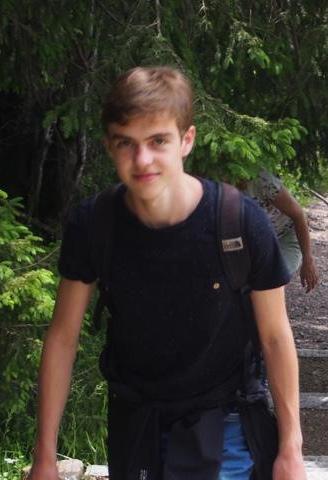
Some of you probably played some Pokémon games when you were younger. The soundtracks from Diamond and Pearl still spark nostalgia within me. But kids nowadays will grow up with quite different games. I was pretty curious to see what new Pokémon games look like, so I tried my luck with one of the two newest main series games: Pokémon Violet.
If your previous experience with Pokémon was a 2D-cartoonish game, playing this game might confuse you. Pokémon Scarlet and Violet are open-world games meaning you will not simply linearly make your way through the gyms and storyline: it is totally up to you in what way you will play this game. Right after the opening tutorial, you can play through 3 different storylines in parallel: Victory Road, Starfall Street, and Path of Legends. Victory Road consists of the typical gym challenges, although it is now up to the player to decide in which order they traverse the gyms. In Starfall Street, you have the bad guys you have to defeat, but in this game, their story is a bit more indepth than in previous games. In Path of Legends, you battle socalled Pokémon called Titans. Playing through these different storylines in any way you want and switching between them created a fun and varied experience.
The open world feel was also something truly entertaining. Seeing Pokémon walking around, flying away, or chasing you added another dimension to getting through routes. Compared to many previous games I was actually getting lost, which was frustrating and fun at the same time. I also found myself wandering off route gathering TM's
in faraway places, and simply discovering all the fun Pokémon there are. Trainer battles were also not mandatory, but I was still finding myself curious to see what kind of Pokémon trainers would have.
Apart from the starters, the new Pokémon did not disappoint me: I constantly played with new Pokémon which all had very cool concepts. The game also introduced a new mechanic for Pokémon who have evolved to look like existing Pokémon, but who are not the same species. To me, these were not as fun as regional variants or completely new Pokémon, but still a nice addition.
To help you traverse the big open world, you receive a legendary Pokémon at the beginning of the game which can be used as a bike. Throughout playing the game the Pokémon receives movement upgrades which are all helpful for crossing the mountains and the waters. In between the great outdoors, there are also some pretty nice cities to explore. Every city is distinct and contains some unique features, like a city with a huge windmill or a city with fishing docks. This also has to do with the fact that the whole game including the cities, landscapes, and ingame culture have been modeled after Spain, which has been done very well in my opinion. So on the surface, all looks well, but when actually trying to explore some of the areas and cities you discover they are not as nice on the inside as they look on the outside. Most buildings are not enterable, doors in cities lead to a menu where you can order food, and structures within areas feel like they have been copy-pasted. These are merely examples of the blankness that rules over this game. You can not even interact with every NPC, and
the ones you do interact with do not really enhance the gameplay. This was pretty disappointing to me since Pokémon games normally do have this extra dimension of exploring the world by talking to NPCs and walking through buildings.
There were also some new additions to the game which did not add much to my playing experience. A very present addition was gastronomy. Every city had a lot of restaurants and food stands, and throughout the outdoors, there were places where you could have a picnic. Personally, this addition felt like it was added simply for entertaining children, but at least it did not affect the gameplay much. The same goes for the additions of TM crafting and auto-battling Pokémon. The latter was mandatory for one of the storylines, but I did not get much joy from it. Other than that I used them very little.
The one addition that did excite me was the new battle mechanic called terastallizing. This mechanic can be used once per battle and when activated, creates a sort of jewel and luster around each Pokémon. Each Pokémon can terastallize and each Pokémon has a special tera type. When it is terastallized, it will change its type to its special tera type. I mostly used this in impor-
26
tant battles, and the animation and experience around it did not fail to amaze me. Pokémon with tera types other than one of their original types were however a bit hard to find, which on the other hand does add to the uniqueness of the mechanic.
Another big addition was the possibility to play most of the game with other people through wifi. I did not make use of this feature yet, but reviews online were not super positive. Some of them state that it feels more like you are playing next
to each other rather than with each other. It supposedly also causes a lot of bugs and crashes. In the offline play, there were also some visual bugs and maybe, more importantly, a very poor framerate. They did not truly affect my personal experience, but if you care a lot about performance this could have quite a significant influence.
After having played Pokémon games a lot as a kid, I thought that this game might change my opinion about Pokémon games in a negative way. Very soon in the game,
Puzzle Solution: Secret Recipe
Text: Tim Hut
To not have to check 232 different possible solution, the first step was to realize one of the missing ingredients is ‘eggs’ leaving us with only 4 possible solutions.
Adding ‘eggs’ (or 01100101 01100111 01100111 01110011) via XOR operations tot the third cyphertext results in the key: 10101001 01001101 01011001 00000101.
At least that would have been the key had your great-great-grandmother correctly encrypted the second g, the key you get is 10101001 01001101 01000001 00000101.
Adding the key to the other cyphertexts and converting back to symbols using the ASCII table results in the final secret ingredients. The
secret ingredients in order are: salt, milk, eggs, love
Or with your key: satt, mitk, eggs, lone
Just for further demonstration filling in ‘eggs’ on the other positions results in:
• eggs, {ogl, satt, zi}b
• {ogl, eggs, mitk, da}}
• zi}b, da}}, lone, eggs
Hence you see had ‘eggs’ correctly been encrypted; the non-perfect secrecy would
Puzzle: Addition Sum Search
Suggested by: Xanti Lizanzu
In the figure to the right you see an “addition sum search” puzzle. Find connecting numbers that make a total of the given sum. The numbers can be connected horizon-

tally, vertically or diagonally.
it became clear the opposite was true. It was awesome to explore the game in my own way, sometimes literally just wandering off-route and seeing what new Pokémon this game had to offer. I could feel the childish spirit in me rising whenever playing the game. It also made me somewhat ignorant of all the quirks that the game does have. So if you are seeking to feel the nostalgia of playing Pokémon games when you were a kid (and by any chance have a Nintendo Switch lying around), I would definitely advise you to try out this game.
have revealed the other ingredients even if you guessed the wrong location of ‘eggs’ three times.
27
Peculiar Potter's Puzzle
Text: Thomas Kanger
Horizontal:
• 1: Remark made when spilling a drink
• 4: 2B || !2
• 6: A group of voters or politicians who share commongoals
• 8: A curriculum
• 11: A powerpoint slide
• 12: Knowledgeful, Inventive, Elegant
• 14: An adult female pig
• 16: To not speak the truth
• 17: The main trunk of the arterial system
• 20: Currency of Croatia
• 21: A speaker of compelling eloquence
• 23: Loving Change, Enthusiasm, Reliability
• 24: City in the north of England
• 25: Earlier than
• 26: Black and yellow insect
• 27: To move about without a fixed course, aim, or goal
• 30: To sit on someone their …
• 33: A service station, being a place to buy petrol for cars
• 34: Dutch name for a kick scooter
• 36: West
• 37: Sustainable
Vertical:
• 1: Major river in Russia
• 2: Having lived for a long time
• 3: A Hawaiian food
• 4: Container for storage
• 5: Letter of the Greek alfabet
• 7: The home of a King or Queen
• 8: Promise to do something
• 9: To make an indirect reference
• 10: 100%-daughter of TenneT
• 13: Long period of months
• 15: Website of Orenburg Airlines
• 17: Out of proper alignment
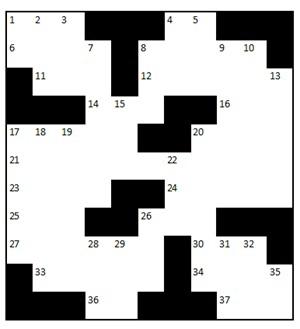
• 18: Musical play including lots of singing
• 19: C18H18
• 20: Movement when praying
• 22: Island
• 26: Good friend
• 28: Free from liquid
• 29: Period before an important event
• 31: Past simple of consuming food
• 32: Zwolle
• 35: River in Italy
28






























































 Text: Xanti Lizanzu
Text: Xanti Lizanzu


